

Bayer retreat from NZ shocks sector

Richard Rennie NEWS Research
DISMAY and concern have greeted the decision by Bayer Crop Science to exit its Hastings research site and stop work on any new crop product trials in New Zealand.
Bayer’s NZ managing director, Chris Miln, told Farmers Weekly the current operating environment and regulatory landscape in NZ make it challenging to justify the company’s time and the expense required to commence research projects that introduce pipeline products.
The departure is also likely to see the loss of two experienced research staff from the company’s NZ office.
The move reflects growing dissatisfaction among agri-chem companies over the significant time delays they face in getting new products approved in NZ.
PGG Wrightson CEO Stephen Guerin told Farmers Weekly PGW has enjoyed a long association with Bayer, trialling and helping develop new crop treatment programmes.
“I think NZ must be concerned about this,” he said.
Despite the loss of the research property, Guerin said, PGW will try to continue its collaboration work – though the job is only made more expensive and complex with Bayer and its property’s absence.
Miln confirmed Bayer intends to retain a strong commercial presence in NZ, focusing on current registered products and the numerous products under assessment by regulatory authorities.
Guerin hopes Bayer’s move will send sufficient signals to the government about the urgency of moving Environmental Protection Authority (EPA) changes along quicker.
It is a deeply worrying prospect when companies of the scale of Bayer do not see a future here in NZ. What does that say to other companies?
Dr Liz Shackleton Animal and Plant Health NZ
His concerns are echoed by Dr Liz Shackleton, CEO of Animal and Plant Health NZ (APHNZ).
“It is no secret all the multinationals are revising their futures in NZ. It is a deeply worrying prospect when companies of the scale of Bayer do not see a future here in NZ. What does that say to other companies?” she said.
A recent EPA review made multiple recommendations for streamlining the agency’s approvals rate.
Continued page 3

Battle lines drawn for young farmers
New Zealand’s champion young farmers are preparing to do battle in Invercargill in the FMG Young Farmer of the Year Grand Final. Held over three days from July 3, the competition will pit seven regional finalists against one another, the winner claiming the coveted FMG Young Farmer of the Year title.
YOUNG FARMER OF THE YEAR 17-23
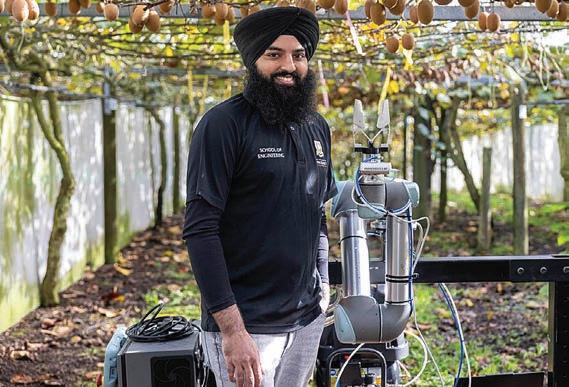
RMA rewrite means changes likely for regional councils.
NEWS 3
Soft skills for robotic picker
A team from the University of Waikato is developing technology to help ease labour shortages in the horticulture sector and reduce fruit wastage.
HORTICULTURE 16
Exporters mull options as missiles fly in the Middle East.
NEWS 5
Rural needs must be heard in new suicide prevention plan.
OPINION 15

EDITORIAL
Bryan Gibson | 06 323 1519
Managing Editor
bryan.gibson@agrihq.co.nz
Craig Page | 03 470 2469
Deputy Editor craig.page@agrihq.co.nz
Claire Robertson
Sub-Editor claire.robertson@agrihq.co.nz
Neal Wallace | 03 474 9240
Journalist neal.wallace@agrihq.co.nz
Gerald Piddock | 027 486 8346
Journalist gerald.piddock@agrihq.co.nz
Annette Scott | 021 908 400
Journalist annette.scott@agrihq.co.nz
Hugh Stringleman | 027 474 4003
Journalist hugh.stringleman@agrihq.co.nz
Richard Rennie | 027 475 4256
Journalist richard.rennie@agrihq.co.nz
Nigel Stirling | 021 136 5570
Journalist nigel.g.stirling@gmail.com
PRODUCTION
Lana Kieselbach | 027 739 4295 production@agrihq.co.nz
ADVERTISING MATERIAL
Supply to: adcopy@agrihq.co.nz
SUBSCRIPTIONS & DELIVERY 0800 85 25 80 subs@agrihq.co.nz
PRINTER
Printed by NZME Delivered by Reach Media Ltd
SALES CONTACTS
Andy Whitson | 027 626 2269
Sales & Marketing Manager andy.whitson@agrihq.co.nz
Janine Aish | 027 300 5990
Auckland/Northland Partnership Manager janine.aish@agrihq.co.nz
Jody Anderson | 027 474 6094
Waikato/Bay of Plenty Partnership Manager jody.anderson@agrihq.co.nz
Palak Arora | 027 474 6095
Lower North Island Partnership Manager palak.arora@agrihq.co.nz
Andy Whitson | 027 626 2269
South Island Partnership Manager andy.whitson@agrihq.co.nz
Julie Hill | 027 705 7181
Marketplace Partnership Manager classifieds@agrihq.co.nz
Andrea Mansfield | 027 602 4925
National Livestock Manager livestock@agrihq.co.nz
Real Estate | 0800 85 25 80 realestate@agrihq.co.nz
Word Only Advertising | 0800 85 25 80 Marketplace wordads@agrihq.co.nz
PUBLISHERS
Dean and Cushla Williamson Phone: 027 323 9407 dean.williamson@agrihq.co.nz cushla.williamson@agrihq.co.nz
Farmers Weekly is Published by AgriHQ PO Box 529, Feilding 4740, New Zealand Phone: 0800 85 25 80 Website: www.farmersweekly.co.nz
ISSN 2463-6002 (Print) ISSN 2463-6010 (Online)

News in brief Copeland resigns
Federated Farmers chief executive Terry Copeland has resigned. He finished his role last Friday. His seven-year tenure coincided with significant challenges for the primary sector from Mycoplasma bovis, covid and the impact of several cyclones. Federated Farmers national president Wayne Langford said Copeland’s cool head had been beneficial for the organisation.
Carrington on board
New Zealand’s most decorated Olympian, Dame Lisa Carrington, is teaming up with Zespri as its inaugural global brand ambassador. The four-year partnership, said Zespri, highlights the company’s commitment to health, quality and excellence – values the world champion canoe sprinter and nine-time Olympic medallist has exemplified throughout her kayaking career.
Danone success
The bumper dairy season is reflected in the annual results of dairy company Danone Nutricia NZ, which increased by $10 million its net profit before tax for the year ended December 31 2024.
Danone reported a net profit before tax for the 2024 year of $34.8m up from $24.7m a year earlier. That translated into a net profit after tax of $29.3m ($19.7m).
Comvita change
Comvita has announced its chief financial officer, Nigel Greenwood, will be leaving the company at the end of this year.
Greenwood joined Comvita in 2020 and has been a member of the executive team, overseeing the company’s financial strategy, investor relations, and corporate services.
Comvita has advised of an expected net loss before tax of between $20 million and $24m in the 2025 financial year.

Writing on the wall for regional councils

Neal Wallace POLITICS Governance
THE days appear to be numbered for regional councils to continue operating in their current form.
Politicians, Local Government
NZ and observers all foresee the role of the current 11 regional councils changing as a result of a rewrite of the Resource Management Act (RMA) and wider local government reforms. Those reforms could see some roles centralised, such as freshwater management – likewise some planning functions currently undertaken by regional councils.
Daran Ponter, the regional head of Local Government NZ, says the structure of local government needs reviewing having been unchanged since 1989.
Regardless, regional council functions will still have to be undertaken.
“When they say, ‘let’s get rid of regional councils’ where is that coming from, what do they think it will achieve?” Ponter asked.
He notes that New Zealand has more than 78 local authorities for a population of 5.5 million.
Wellington alone has nine for 550,000 people.
He said establishing unitary authorities that perform the

functions of city or district councils and regional councils, could be an option.
RMA Reform Minister Chris Bishop said the government is working its way through possible changes to regional councils in the context of resource management reform.
“The reforms raise issues about who does what in the system, and as a government we are clearly keen on less bureaucracy.”
NZ First Minister Shane Jones has been vocal in his opposition to regional councils, singling out Otago and Waikato and accusing them of stifling economic growth.
Otago, he said, is questioning expansion of the Macraes gold mine due to the discovery of a moth, while Waikato has become “an iwi back office”, effectively granting local Māori a right of veto over council decisions.
Primary industries that are driving economic growth have been stymied by regional council decisions, he said.
“They have a role in takes and discharges, although I feel a lot of those should be grandfathered and have a higher threshold before requiring permits.”
Flood protection is one role they should retain, he said.
Jones said he is working with coalition partners on reforming the RMA and his party will campaign at the next election to rationalise or “decapitate” regional councils.
Federated Farmers board member Sandra Faulkner said reforming the RMA provided perfect timing to also look at local government.
Commenting on the potential loss of local input, Faulkner said regional councils administer legislation set by central government.
An analysis by Farmers Weekly last year found the 11 regional councils have averaged doubledigit rate increases for each of the last three years – 11.5% in 202223, 12.4% in 2023-24 and 16.2% in 2024-25.
One thousand new staff had been employed by regional councils in the last five years, now totalling over 4600, joining a workforce where 35% earn more than $100,000 a year.
Nick Clark, a senior fellow with the NZ Initiative, said RMA reform will change the structure of local government.
“In the regional council space, freshwater could move to central government such as the Ministry for the Environment, or ministerial-set direction or the Environmental Protection [Authority] taking over those
functions but with regional offices.”
Clark is not a fan of the principle that bigger is better and believes unitary authorities offer an alternative structure, with a province like Canterbury potentially having several unitary councils.
He said councils have moved away from their initial intent.
“Over time there has been a blurring of what councils do and don’t do.”
There are claims environmental activists have roles on staff and as elected officials, which is pushing regional councils in a certain direction.
Equally, there has been tension between some councils and the government.
Local Government NZ president Sam Broughton said councils are already discussing how the local government structure can be improved given RMA and water reforms.
“However, we need to take a strategic approach and determine a preferred future state for the whole system rather than just reacting to individual pieces of government reform.”
Councils are aware local government structures and functions need to be addressed and while councils can work together, current legislation makes that difficult in practice.
Fert-spreading code includes drones for first time

Neal Wallace TECHNOLOGY Fertiliser
THE Spreadmark Code for applying fertiliser has been updated to include the use of drones to apply nutrients. The quality assurance programme was recently relaunched by the Fertiliser Quality Council (FQC) to ensure the accurate placement of nutrients, simplify procedures for applicators and stakeholders and reflect the changing nature of farming.

It includes standards for the application of slurry, combined aerial and ground spreading and requiring operators of drones who apply nutrients to have the appropriate operating certificates.
FQC chair Jim Galloway said the code integrates nutrient stewardship under the four-R principles of the right product at the right rate at the right time and in the right place.
It was developed by a group consisting of Federated Farmers, Groundspread NZ, the NZ Agricultural Aviation Association,
Continued from page 1
But Shackleton said these have not yet been delivered, and she urged the government to move with haste.
The Bayer research farm near Hastings has 600 apple trees, 1100m of grapevines, 50 peach trees and a cropping-forage trial area.
Longtime AgResearch scientist and weeds expert Dr Trevor James said the site is a valued resource. He noted Bayer has been a respected corporate citizen, making significant contributions to areas like managing weed resistance and industry seminars over the years.
Ten years ago Bayer’s NZbased trials and research were instrumental in introducing more NZ farmers to fodder beets as
fertiliser companies and the Fertiliser Association of New Zealand.
The scheme registers applicators who have certified application units, and operators, and sets out appropriate quality management systems.
To be certified, applicators must have a quality management system that is regularly audited to ensure customer needs and Spreadmark standards are met.
The code, which took two years to re-write, also simplifies procedures for applicators and stakeholders, incorporates
a high value feed supplement.
“I can partly understand it [withdrawing]. NZ is simply so small, our total chemical use for pesticides would be less than any Australian state. We are talking big dollars in Australia, and it’s a very competitive market here now,” James said.
Dr Rachel Kilmister, R&D manager at NZ Apples and Pears Incorporated, said despite NZAPI having an extensive research programme finding long-term solutions to issues like loss of treatment chemistry, it could not do it all itself.
“We are extremely disappointed to see the innovation pipeline shrinking in NZ. The sector needs access to sites where research can be undertaken in commercially relevant settings where it is safe to fail.”
nutrient stewardship principles and the four-Rs, and encourages fertiliser suppliers to take greater responsibility for informing users about product contents and application best practices.
Galloway said the modernised code acknowledges the fastchanging nature of the agricultural sector.
“The new Spreadmark Code is designed to be a living, online resource that is regularly updated to reflect evolving industry needs and regulatory changes,” Galloway said.
“It offers assurance not only to
She said it would be difficult to commercialise and adopt new solutions in the absence of such a site.
HortNZ CEO Kate Scott echoed the disappointment felt by industry. But she said HortNZ is not surprised, given how complex, time-consuming and resource intensive it has become to get horticulture products approved and registered in NZ.
“This closure reinforces just how critical it is to have a regulatory system that is efficient, predictable and fit for purpose. We need a regulatory system that encourages innovation and investment, rather than deters it.”
She said she hopes the Ministry for Regulation’s review recommendations lead to meaningful change to resolve the ongoing issues and delays.
applicators but also to farmers and growers who can be confident that by choosing a Spreadmarkregistered applicator, their product is applied to the highest standard by skilled professionals.”
Project lead Leo Fietje said the framework aims to improve the efficiency, accuracy and environmental responsibility of fertiliser application.
“The strong desire by industry to engage with both central and local government, to raise awareness, capture learnings, and promote confidence in the code, was commendable,” he said.
This week’s poll question: Have your say at farmersweekly.co.nz/poll Should the government be showing more urgency with its changes to the Environmental Protection Authority?
STYMIED: NZ First Minister Shane Jones says primary industries that are driving economic growth have been stymied by regional council decisions.
Wrightson
High value land options may open for farmers

CHANGES to the definition of highly productive land may help landowners and farmers wanting to subdivide their properties in the future.
Minister for Housing and Resource Management Reform
Chris Bishop has announced plans to change housing rules to work within the government’s proposed resource management reforms.
They included new rules to make it easier for cities to expand outwards at the urban fringes on greenfield developments.
They come after the previous government had focused on “up not out” to meet city housing demands, while also offering greater protection to quality land through the National Policy Statement (NPS) on Highly Productive Land.
A 2021 Ministry for the
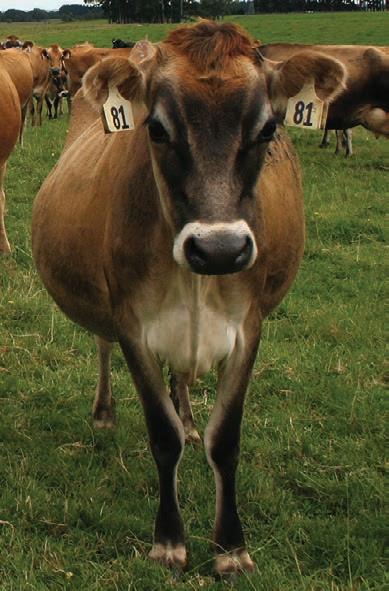
Environment report highlighted how 55% of highly productive land was lost to urban development between 2002 to 2019, prompting the NPS in 2022 that aimed to protect such land.
At present the NPS protects land use classification (LUC) land 1-3.
The government is proposing to remove LUC 3 land from being classified as highly productive land under the NPS.
Bishop told Farmers Weekly in a written statement that LUC 3’s removal is part of the primary sector national direction consultation.
“The primary sector package also asks about the proposal to create special agriculture areas in key food growing areas such as in Horowhenua and Pukekohe.
“The aim is to protect and retain these growing areas, even if LUC 3 protection was removed in other parts of the country. Special agricultural areas would be subject to the same restrictions as LUC 1 and 2 land.”
He noted removing LUC 3
protection reduces the amount of land protected by 64% or 2.44 million hectares, but not all that land is on city fringes, and some urban areas are surrounded by LUC 1 and 2 land.
Sam Chidgey, a planning and environmental lawyer in Tavendale and Partners’ Christchurch office, told Farmers Weekly the removal of LUC 3 land from the NPS would be welcomed by many who had been surprised and shocked at how quickly the policy was implemented in 2022.
Landowners and farmers with properties on highly productive land are due to receive notification via their councils about their status later this year.
Areas including Horowhenua, mid-Canterbury, Waikato and Pukekohe are hot spots for multiple properties affected by the definition.
“Removal of LUC 3 restrictions would at least give people in rural zones in high growth regions more opportunity to subdivide

and develop their land, but you will still have to grapple with the remaining rural provisions in district and regional plans that apply, which are not always development friendly,” Chidgey said.
But he noted there would probably be some government or local council decision-making over whether or not LUC 3 areas are included within special agricultural areas, with further consultation on these areas likely to occur.
He said the government is taking a top-down approach in trying to boost land development.
This includes potentially giving
itself the ability to intervene directly in district and regional plans if required by removing or altering provisions that could negatively impact economic growth, development capacity, or employment.
A planning industry insider doubted how much the new rules would open up options for landowners. He pointed to existing rules that already allow for subdivision in high value land zones, if the development falls into certain criteria. That includes being part of a region’s Smartgrowth plan, which can override the NPS high value land limitations.
Repro lift a boost for milk revenue

A CLIMB of 4% in the 6-week incalf rate over the past two seasons among New Zealand dairy farmers brought an estimated extra $91.5 million in milk revenue into the industry, according to LIC.
LIC senior reproductive solutions adviser Jair Mandriaza said that figure could well be higher if more farmers reported their data.
It showed farmers have switched their focus from increasing herd numbers to breeding more efficient animals, he said.
“The better the repro is, the better the farmer is going to be able to run their business.”
Farmers lifted their 6-week incalf rate by 1% in 2024-2025 to 70.1%. In 2023-2024, it jumped 3% – a huge increase since 2022-2023, where it was recorded at 66.6%.
“The previous year that was the best year was in 2019 at 67.8%. The worst year we had was 2016 on the back of the dairy downturn where it was 65.8%.”
The most recent data is from 4884 spring calving herds, representing 2.6 million cows.
The data set has also increased over time, with 200 more herds added in the most recent data.
The revenue calculation is based on a DairyNZ 6-week in-calf rate calculation that extrapolates the increase into a monetary figure.
There are several possible reasons behind the lift, Mandriaza said. He suspected that apart from a few regional exceptions such as Southland, favourable weather produced good conditions for both feed growth and cow health.
“That definitely plays a part.”
Mandriaza also believes that farmers are starting to see the rewards after going through a period marked by challenges both on and off farm, which meant farmers had to maximise what they had.
“A shift of 3% in 2022-2023 is unheard of. Nationwide up until 2023, year-to-year there would be a variation of 1% maximum where it got better or worse.”
There were signs that the 6-week in-calf rate could lift during those years because submission rates were good during those years.
Those rates were even better for last season.
Farmers also deserve credit for lifting their skills, he said.
“Two point six million cows is a lot of cows to get right and it’s definitely a farmer-led scenario and it’s a combination of everything.”

P r o t e c t i n g y o u r n o s e i s c r u c i a l f o r b r a i n h e a l t h b e c a u s e i t s e r v e s a s t h e
m a i n e n t r y p o i n t f o r a i r a n d i n h
a n d p a t h o g e n s , w h i c h c a n d i r e c t l y r e a c h t h e b r a i


Gerald Piddock NEWS Dairy
Richard Rennie NEWS Land
LIFT: LIC data showed 6-week in-calf rates lifted to 70.1% last season.
ZONED: Chris Bishop has pointed to ongoing protection remaining for high value land in the form of special agricultural growing areas.
Exporters on high alert as Gulf erupts

ANigel Stirling NEWS Transport
S MISSILES started flying in the Middle East earlier this month, exporters were frantically drawing up plans for re-routing containers in case of an unprecedented closure of the Persian Gulf.
The chances of a shutdown of the vital waterway were at an alltime high after the United States bombed Iranian nuclear facilities and Iran responded by launching missiles at a US air base in Qatar.
As Farmers Weekly went to press an uneasy ceasefire between Israel and Iran was in place.
Fonterra currently has 1300 containers on the water bound for the Gulf, with another 1600 scheduled for departure in the next few weeks.
The dairy co-operative’s director of global supply chain, Santiago Aon, said shipping lines are continuing normal services to the Gulf for now.
“We continue to operate business as usual but we have a team that is ready to act if we see certain triggers.
“The closure of the Strait [of Hormuz] would be an obvious
trigger but we have also two or three situations which still in our view would have increased the likelihood of that event happening and we would then start to act on it.”
An “incident team” has been
There are betterpaying markets and all this is just another layer of risk.
activated to find alternative routes for getting containers to customers in the Gulf if access by sea is cut off.
That includes dropping containers at other Middle Eastern ports and trucking them overland to customers in the United Arab Emirates or to be loaded from there onto coastal shipping services headed further up the Gulf to Qatar, Saudi Arabia or Kuwait.
The six oil-rich countries of the Gulf Cooperation Council are the second-largest market for NZ dairy exports after China, taking $1.9 billion worth of exports last year. Meat exports were $260 million.
One meat exporter spoken to by Farmers Weekly had frozen

and chilled beef on ships bound for the UAE. Should the shipping lines pull services to the Gulf while the cargo is on the water, it would
be up to the exporter to find an alternative route or arrange to on-ship it to another market, the exporter said.
“Realistically we would turn it around and bring it back either to NZ or into Asia depending on what shelf life it has got left.
“Domestic beef prices are probably the best in the world right at the moment so we wouldn’t lose out there.”
A maritime lawyer at Hesketh Henry in Auckland, Simon Cartwright, said legal responsibility for goods typically passes from the exporter to the buyer as soon as they are loaded onto a ship.
“But in practice the exporters back in NZ end up having to deal with it because they have the relationships [with the shipping companies]
“When something goes wrong Maersk doesn’t talk to the buyer, they talk to the exporter and purely for commercial reasons they are the ones that have to deal with it if there is a problem and the buyer doesn’t want the goods anymore or won’t pay.”
The meat exporter is reviewing its sales to the Gulf even with a ceasefire in place.
“We have already pared back our sales into that part of the world significantly.
“There are better-paying markets and all this is just another layer of risk.”
Grow farm data alongside wool, industry webinar hears

Neal Wallace MARKETS Food & fibre
STRONG wool has multiple attributes desired by consumers but these need verification – and changes to selling habits for those nature and environmental qualities to be utilised. That is one conclusion of a report by the Lever Room for Wool Impact released in a webinar last week, which also found consumers want products that meet their climate, environmental
and biodiversity concerns.
The report looked at how sustainability attributes can support strong wool brands and concluded that could be done by providing verifiable farm-level data on emissions, sequestration and biodiversity for users such as architects and designers.
Report author and Lever Room strategic lead Rebecca Mills said the fact that 25% of New Zealand’s native vegetation is on sheep and beef farms provides a point of difference for consumers.
“We can use our strategic
advantages. Sustainability doesn’t have to be a risk or a cost but it can be an advantage for NZ brands,” said Mills.
The challenge is to quantify on-farm carbon emissions and sequestration and biodiversity values.
“There is a shifting focus from carbon to the many other aspects of planetary health and we need to be aware of all of them.”
Mills said consumers want transparency and confidence about what they are buying, which requires a close relationship
There is a shifting focus from carbon to the many other aspects of planetary health and we need to be aware of all of them.
between customer and grower.
Wool Impact sector executive Gretchen Foster said farmers
do not want or need extra work, but entities like the NZ Farm Assurance Programme could provide that data and verification. She said a feature of the past three years was how well the wider strong wool sector was working together and sharing data, and this needs to continue.
Wool Impact senior executive Ross McIsaac said domestic consumption of strong wool is about 15% but could double in the next five years.
The goal has to be to translate that into higher farmgate prices.

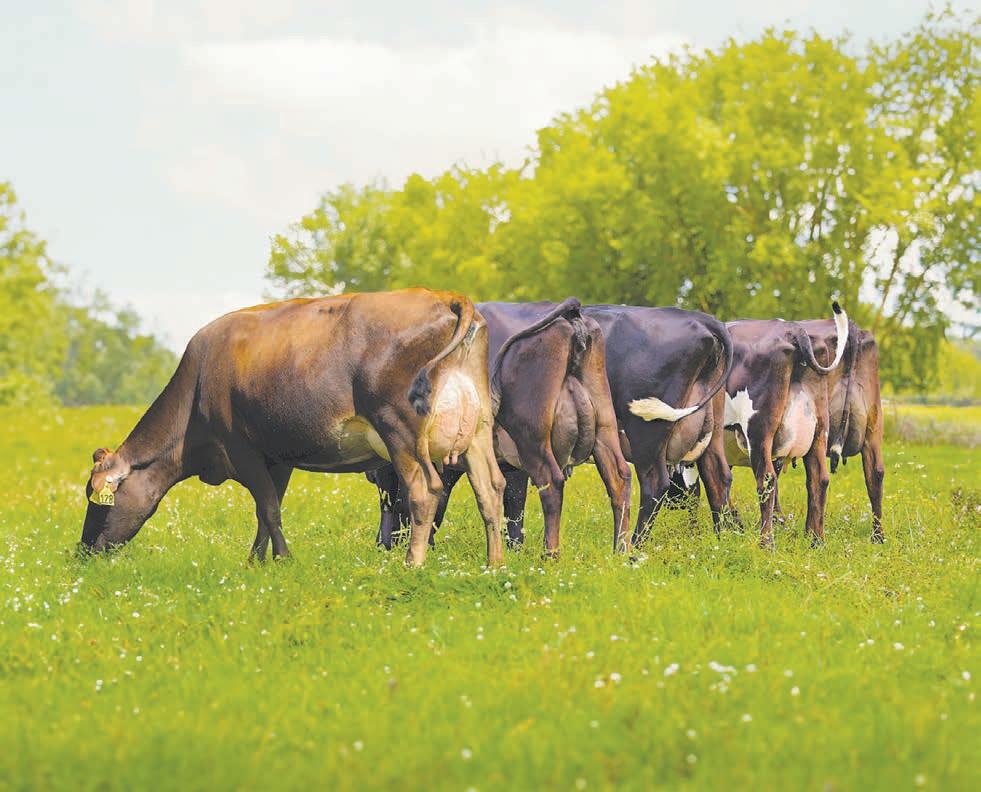

Rebecca Mills Lever Room
TOO LADE NOW: Fonterra currently has 1300 containers on the water bound for the Gulf, with another 1600 scheduled for departure in the next few weeks.




















































Succession urgency grows as farmers age

Annette Scott NEWS Succession
RESEARCH has revealed just one-third of New Zealand farmers have a formal farm succession plan.
The Changing of the Guard paper, commissioned by agribusiness banking specialist Rabobank, also found that onethird of farmers intend to pass their farm to their children – but 39% report having no children seriously interested in farming.
Changing of the Guard reveals that over the next decade, more than half of all NZ farm and orchard owners, about 17,320 farmers and growers, will reach the age of 65.
At current land values, the transition of these farmers’ operations represents a conservative estimate of more than $150 billion in farming assets that will depend on a successful succession process.
Launching the paper at the Primary Industries NZ Summit in Christchurch, Rabobank NZ chief executive Todd Charteris said the findings highlight the extent of the succession challenge ahead for the agricultural sector.
“Succession is not a moment in time, it’s a process that takes years
of planning, conversation and adaptation.
“The traditional model of passing the farm to the next generation is under pressure, but there are new and innovative models emerging that can help families stay connected to their land.”
The paper, a fourth in a series exploring the opportunities and challenges facing NZ’s primary industry, looks at the emotional, environmental and economic aspects of farm succession, including the risks of disconnect between generations, and the realities of servicing debt.
There are innovative models emerging that can help families stay connected to their land.
Todd Charteris Rabobank
Rabobank commissioned the University of Waikato School of Economics to review official statistics as part of the development of the paper, alongside its own desktop research and case study interviews.
Charteris said data collected showed only a third of farmers have a formal succession plan.
“A further 17% have discussed succession with the relevant parties but nothing is documented, leaving exactly 50% who had neither discussed succession nor commenced a succession plan.”
For many Kiwi farmers, the dream is that one of the kids will take over the farm.
“The flipside is that it can also be experienced as a feeling of pressure or a sense of responsibility by the next generation.
“Taking over the family farm involves committing to decades of indebtedness in a sector that is subject to volatility and uncertain returns.
“It remains a big call for a 20-something and their bank.”
While this is the case, data suggests the financial obstacles to farm ownership have plateaued in recent years.
“However, the challenges to get on the ladder remain high, particularly with the increased scale of farming and need to increase margins to support borrowing.”
The paper also highlights several increasingly prominent succession models, including hybrid ownership models and corporate structures, which are being adopted to help farming families stay connected to the land.
“If we get this right, we can

CHALLENGES: Rabobank NZ chief executive Todd Charteris says the findings of a new report highlight the extent of the succession challenge ahead for the agricultural sector.
unlock new pathways for young Kiwis who are passionate about farming, whether they’re farming mad, farming curious or farming adjacent to own a share of a greater pie.”
Succession takes time and most of the farmers spoken to had been looking at succession for years, and all of them wish they’d started
the process earlier.
“As a sector, we need to be open to considering and developing new models to ease the way for the next generation into farming on fair terms and ensure Kiwi farming families keep the connection to their land and heritage.”
The full paper can be accessed on the Rabobank NZ website.
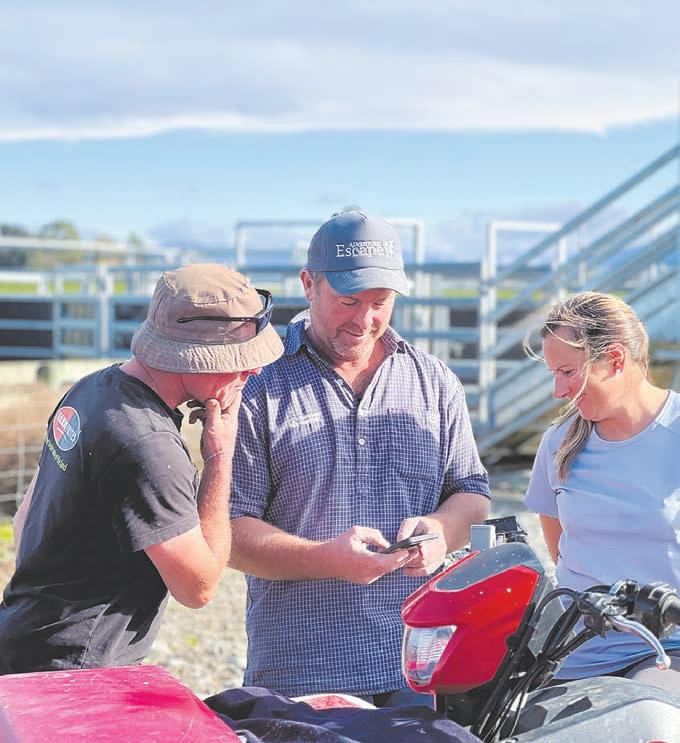
Tough choices and trade-offs lie ahead

Annette Scott MARKETS Trade
NEW Zealand’s survival in a changing geopolitical landscape and global trade environment will be dependent on several key decisions, Rabobank global strategist Michael Every says.
In his keynote address to the Primary Industries Summit in Christchurch last week Every told more than 400 attendees that while “it’s total chaos out there right now in the world”, there could be a bright side.
“Yes, there are some risks but on the other hand if things turn out right there’s real sunshine on the other side; this is true for trade wars and various different political events going on in the background, and what’s going on now.
“There can be peace through strength but there will be no more blank cheques and no more free lunches.”
Survival will require geopolitical shifts and the new geopolitical system will change everything.
“There is Grand Strategy, as now, with economic policy focused on inflation or budget deficit, to Grand Micro Strategy, shift to trade policy, where economic statecraft is understanding the

reality and using it to predict macro and market outcomes, keeping society together, stable, united, strong and in control of things in a violent zero-sub world, which, increasingly around us, the world looks like.”
Tariffs can work; they are not stupid, Every said.
United States President Donald Trump is not as “nutty” as people think he is, as there can be upsides to trade wars and geopolitical crisis.
“Tariffs have worked for centuries, until a few decades ago when we thought we knew better.
“Current madness is part of the method. There’s always a question whether you sit in favour, or not.”
There will be winners and there will be losers as international trade imbalances stem from domestic economic imbalances.
“America doesn’t have to offer anyone a good deal. I don’t think the New Zealand
Government understands what I have explained, and very few governments do as most are stuck in economic policy.”
At some point saying “we are friendly little Kiwis and we will go with everyone” will not work.
“There’s two elephants biting; one is China, that without a global policeman is anarchy. The other is America, with hope people will swallow their pride instead of the US sheriff.
“Or do you buy your own horse
and gun and go out and ride together?”
Thinking narrowly about free trade is gone.
“We have got to think what is the reality come 2100.
“It is what it is and we need to see it.
“Tariffs are tied up with balancing the fiscal situation. I can’t see realistically going back to economic policies.
“What Trump has done has changed the face of global politics and if what he is doing works it will be the template for the next 20 to 30 years.”
Can NZ sit on the fence?
“No, ultimately change is likely to happen and it will get to a decision point.”
Looking back from 1840 through until 1941, NZ farmed for the United Kingdom, under UK protection. From 1945 to 1973, NZ farmed for the UK under US protection. From 1974 through to 2024 NZ farmed for Asia, under US protection.
“From 2025 it’s not about who NZ farms for, it’s about what kind of economy and who is protecting you.
“Choose America and it will be extremely damaging in terms of trade. Choose China and it will be disastrous in terms of security.
“So there are trade-offs needing to be made.”
Woolwashing could be breach of Fair Trading Act

Gerhard Uys NEWS Food & fibre
THE Commerce Commission says using wool-associated terms to promote synthetic fabrics risks misleading consumers and could violate the Fair Trading Act. This follows a Consumer NZ investigation showing several companies using wool-related terms to market clothing and textiles made from synthetic/wool blends, or containing no wool at all.
A Consumer NZ article said terms such as “fleece”, “Merino”
and “vegan wool” are used, with one retailer naming a fully synthetic jacket its “wool jacket”.
Without commenting on specific cases, a Commerce Commission spokesperson told Farmers Weekly that any behaviour or marketing that misleads consumers is concerning and could be a breach of the Fair Trading Act.
The Fair Trading Act prohibits false, misleading and unsubstantiated representations.
“Any claim a business makes about a good or service must be able to be proven – whether the claim is express or implied.
“This includes environmental claims, such as natural product claims, which can be a powerful marketing tool.
“Environmental claims can include statements about recycling, biodegradability, and the use of natural products, such as wool.”
Consumers are increasingly considering the environment and may be influenced to purchase from one company over another, based on environmental claims, the spokesperson said.
The general manager for The Campaign for Wool, Kara Biggs, told Farmers Weekly that


companies mislead consumers by marketing synthetic fabrics as being wool or having wool-type attributes.
Some companies market garments as wool despite the fabric containing only a small percentage of the fibre.
These companies still follow rules governing fibre content labelling, with the white labels inside a piece of clothing showing the fabric and fibre content correctly, Biggs said.
The best outcome would be for retailers to swap out to wool only, she said.
Often synthetic garments
marketed as wool are more expensive than 100% wool products, with manufacturers profiting off wool’s reputation, she said.
Any claim a business makes about a good or service must be able to be proven – whether the claim is express or implied.
Spokesperson Commerce Commission





TAKING A STAND: Rabobank global strategist Michael Every says at some point being friendly little Kiwis who will go with everyone will not work.
Photo: Annette Scott








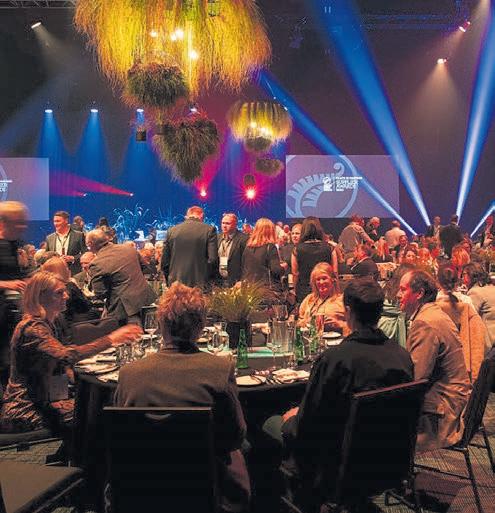


STAY GROUNDED, GET FUTURE FOCUSED.


In a world where change is the only constant – shaped by unprecedented geopolitical shifts, evolving consumer expectations and a dynamic global trade environment – staying grounded and future focused has never been more important.
Our Plate to Pasture Farmer Conference is your opportunity to cut through the noise and focus on what’s really important.
We’re hosting a lineup of industry leaders and expert speakers, plus the Boning Competition National Finals, and of course the Plate to Pasture Supplier Awards.
We’re inviting everyone who creates goodness with us – farm owners, managers, stock hands and shepherds; wise old hands and keen young guns.
Our conference is free to attend for all suppliers, shareholders and teams.

Catchment funding model raises questions

Richard Rennie NEWS Environment
THE founder of one of the country’s highest profile catchment groups says funding needs an urgent reset as coffers start to empty, and the government’s future commitment remains murky.
Rick Burke, one of the original founders of the Western Bay of Plenty Project Parore group near Katikati, said his group has just a year left to run on its funding – and there are multiple groups across New Zealand with funding ending this month.
The government has provided $4.3 million for six larger collective groups to continue, including the likes of Thriving Southland and Rangītikei Rivers.
Burke said there is now pressure on smaller groups to also form collectives. He said this is understandable as the government pushes for better spend and efficiency – “but efficiency will not always come through having single large entities”.
The Western Bay of Plenty has
three catchment groups, including Burke’s Project Parore, Wai Kōkopu east of Te Puke, and Waiotahi near Ōpōtiki.
Burke pointed to the disparate land uses in regions like Bay of Plenty, compared to relatively homogenous land uses and areas like those in Thriving Southland.
Despite sharing the same region, the contrast between a group like his with its varied land uses and the Wai Kokopu catchment group, also in BoP, are significant.
Dr Alison Dewes, Wai Kokopu project manager, said a key challenge to unifying groups is the higher proportion of iwi and hapū engaged in areas like BoP, compared to Southland.
“Almost 50% of all the country’s hapū are in Waikato-BoP. The various waka travel at different speeds.”
The Wai Kokopu group has shared and overlapping interests of seven hapū within its 34,000 hectare catchment.
Dewes said getting an accord on direction and funding across all was extremely difficult, if not impossible.
Her group’s funding officially
ended in June 2023 and it is now down to the dregs in its current account, with no confirmation of ongoing support from the Ministry for Primary Industries. It received $1.45m from the MPI through the Jobs for Nature programme.
The Wai Kokopu group was recently awarded one of the inaugural Growing Native Forests Champions awards from the MPI for retiring erodible land and improving estuary health.
Burke said having to have large collectives was a “Wellington idea” coming ultimately from the regulators.
Groups felt blindsided when this proposal was recently put to them at an MPI-BoP Regional Council field day.
“How can a regulatory body also organise farm groups? Everyone gets gun shy when that happens.
“They [the MPI] would be better to be on one side holding the ‘stick’ of regulation. It would be far more effective for them to allow industry to become involved with catchment groups. We have already seen this with Greenlea Meats in Waikato being very successful.”
Halter valued at US$1bn after milestone capital raise

Gerald Piddock TECHNOLOGY Livestock
HALTER has raised $165 million from investors, putting the company’s value at $1.65 billion –or US$1bn.
The late stage (Series D) fundraising round was led by Bond, a global technology investment firm as well as NewView Capital, continued support from Blackbird and Icehouse Ventures, and ongoing backing from Bessemer Venture Partners, DCVC and Promus Ventures.
Think of it like fuel for us to go and achieve this mission to make farmers more productive and sustainable.
Craig Piggott
Halter
Halter founder and CEO Craig Piggott said it was a milestone for the virtual fencing and animal management company.
It will enable it to keep improving the Halter system and expanding their business within their existing markets of New Zealand, Australia and the United States, he said.
“Think of it like fuel for us to go and achieve this mission to make farmers more productive and sustainable.”
The Halter system includes a solar-powered smart collar for each cow, towers for connectivity,

and an app that lets farmers manage their cattle and pasture from their phone. Cattle are guided by the collar’s sound and vibration cues. Farmers can virtually fence, move and monitor their cattle 24/7.
Piggott said dairy and beef farming is a powerhouse of New Zealand’s economy, generating over $30 billion and nearly 30% of the country’s total exports each year.
“This capital will help thousands more farmers increase productivity and deepen their enjoyment of farming, in turn driving economic growth.”
While the US$1bn valuation is not something he dwells on, it has enabled Halter to be more ambitious.
“What it does enable is the bigger capital raises in the first
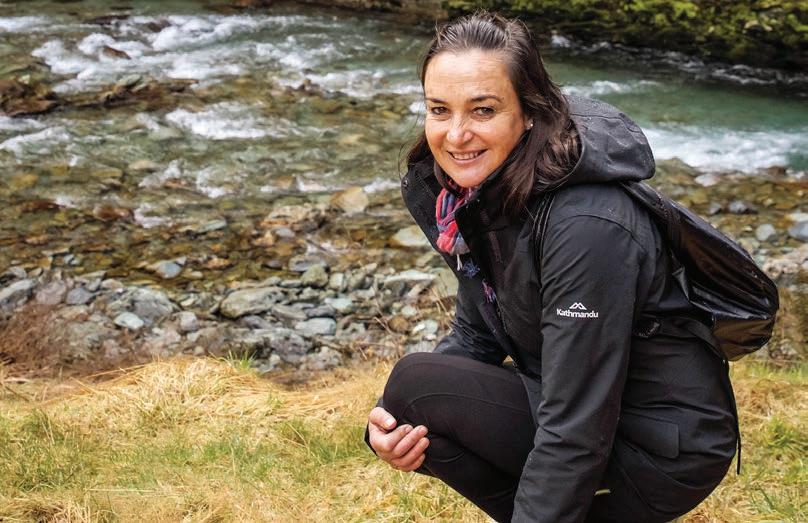
COMPLEX: Catchment project manager Dr Alison Dewes says placing multiple catchment groups under a single collective in a region is not as
Burke acknowledged catchment groups should not expect to be funded indefinitely by the government.
His group is considering other ways to raise funds and save money including seedling sales and doing more work in-house rather than with contractors.
The MPI’s acting director of on-farm support, Tim Stevenson, said it is investing in about 40
catchment-based projects across the country.
In the coming months the MPI will be working with other government agencies and groups to get their feedback and input on future funding options.
“We are committed to backing farmers’ efforts to improve land management practices and the important work of catchment groups,” he said.
McDonald’s lovin’ NZ beef credentials

Neal Wallace NEWS Food & Fibre
ONE of New Zealand’s largest global beef customers says NZ farmers are helping it meet its greenhouse gas emission reduction targets.
Rebecca Honeysett, McDonald’s head of sustainability for NZ and Australia, told farmers at Fieldays that data was crucial to demonstrate those environmental gains.
“I am confident there is a lot happening that will help the likes of McDonald’s move towards their emissions reduction targets.”
McDonald’s sources about 10% of its global beef supplies from NZ and Australia.
place. We can do a round like we have done, and we can use that to invest in the system and improve the system.”
He is grateful for the trust of farmers who were early adopters of their technology.
“We partnered very closely with our first partnership farm, and we have always worked closely with them. In my mind, they are the heroes in this story. They have helped us build this product in such a way where we are able to have the impact that we do.”
He is also delighted to partner with Bond and to welcome NewView and is grateful for continued support from investors who backed them early.
“We’re investing in exciting product innovations, plus expansion throughout New Zealand, Australia and the US.”
Honeysett said the global restaurant operator collaborates with and contributes financially to initiatives to improve farmers’ environmental standards through projects such as regenerative farming systems.
Simon Kenny, the head of impact and communications for McDonald’s Restaurants NZ, said in lieu of paying premiums for beef, the global company has invested hundreds of thousands of dollars to fund projects assisting NZ farmers with their on-farm management.
Kenny and Honeysett were part of a NZ Roundtable for Sustainable Beef panel discussion at Fieldays.
“NZ is in a really good position due to your grazing systems,” said Honeysett.
From a 2018 base year, by 2030 McDonald’s goal is to reduce Scope 1 and 2 emissions by 50.4% and Scope 3 emissions, those generated within its supply chain, by 7%.
Hawke’s Bay farmer Greg Hart said farmers hold the key to how food is produced, environmental concerns are addressed and nutritional challenges met.
“We need to understand that nature, after millions of years of research and development, has all the solutions.”
Dave Harrison, Beef + Lamb NZ’s policy manager, said the global growth of nationalism does not mean sustainability concerns have disappeared.
“Sustainability remains important to consumers.”
He said a lifecycle analysis of sheepmeat production proves NZ has one of the world’s lowest environmental footprints.
The challenge is to take that knowledge to satisfy the requirements of our customers.
“As a sector we do great stuff but we do not just need to produce the most sustainable food on the world, but to be among the best at telling that to the world.”
The NZ Farm Assurance Programme-plus (NZFAP+) is an ideal tool and Harrison said with 10,000 farmers committed so far, meat companies are paying a premium price for qualifying stock.
Associated Agriculture Minister Andrew Hoggard said farm plans have a key role in managing environmental impacts and providing mitigation measures.
EXPAND: Halter founder and CEO Craig Piggott says the extra capital will help them to keep improving the technology and expanding their business within their existing markets.
simple as it may sound.





PINZ Awards shine light on sector leaders
Staff reporter PEOPLE Awards
SOUTHLAND farmer and New Zealand Pork chair
Eric Roy has taken out the Outstanding Contribution to Primary Industries award in the 2025 seventh annual Primary Industries of NZ Awards presented at the industry summit in Christchurch.
Roy’s production, leadership, advocacy and political service

to primary industries and rural communities in NZ and the wider Pacific spans almost 60 years.
His work for Young Farmers culminated in his election as world president, and the six-term Member of Parliament has also excelled in roles with Federated Farmers, Pāmu, the former Meat and Wool Board and a host of community and charity initiatives.
“Few can match his contribution.
Eric Roy is a truly exceptional New Zealander,” the judging panel said.
A young Federated Farmers leader and Bay of Plenty sharemilker chair building her expertise advocating for the sector, Bridie Virbickas, was presented with the Emerging Leader award, Judges noted Virbickas is making a strong mark in the dairy sector, managing 850 cows while leading beyond the farm gate.
As an elected Feds sharefarmer leader, Virbickas supports fellow farmers through advocacy, dispute resolution and practical workshops.
She’s also a founding trustee of AgRecovery, helping reduce farm waste nationwide, and leads on-farm restoration projects with schools and councils, demonstrating her commitment to sustainability and community.
A master in the game of leadership and advocacy, the late Chris Allen, was posthumously




named Rural Hero.
The former Federated Farmers national board member died in an accident on his Ashburton farm late last year.
It’s been said that every NZ farming family is in debt for his years of championing rural causes.
The judges acknowledged Allen’s “collaborative nature, persistence and practicality, which meant as a Federated Farmers leader his advocacy on freshwater, environmental and biodiversity issues was compelling and effective”.
“A top farmer in his own right, he led with humour and knowledge.”
Dr Robyn Dynes won the Primary Industries Champion award for her research into nitrate leaching and emissions, which has directly informed national mitigation strategies.
Dynes helped build uptake of sustainable land-use change and, as a principal scientist, adviser and board member, has helped keep farmers, scientists, and policymakers working together.
A Foundation for Arable Research initiative to help farmers get the most out of their combine harvesters earned FAR the Technology Innovation award.
The results of workshops and follow-up one-on-one sessions were spectacular, with improvements in harvest


efficiency, productivity, sustainability and profitability, with farmers reporting increases in yields of between 20% and 50%.
The Team and Collaboration award went to Fonterra, LIC, Ballance and Ravensdown for their open data sharing ecosystem.
Built on key principles of recognising that the data belongs to farmers, keeping data secure and letting farmers choose who they share it with, the initiative has saved farmers an estimated 250,000 hours of administration time so far.
The Chia Sisters, who use NZ fruit and ingredients alongside chia seeds in their health food drinks, took out the Food,
Beverage and Fibre Producer award.
Judges noted their sustainability commitments and innovation through the supply chain, including pioneering pressed juice in returnable kegs, and supporting growers by making use of haildamaged fruit.
PacificVet Ltd and co-founder Dr Kent Deitemeyer won the Guardianship and Conservation/ Kaitiakitanga award.
Judges were impressed that the company donated its specialist services to support the Department of Conservation to vaccinate NZ’s critically endangered bird species, such as teal and kākāpō.
Ballance trophy goes to Taranaki dairy farmer
Staff reporter PEOPLE Awards
BRENDAN Attrill of Caiseal Trust in Taranaki has won the supreme award at this year’s Ballance Farm Environment Awards.
nationally and internationally, across goat, sheep and beef, and dairy farming, and recognises the challenges different sectors face.
“He brings a strong environmental focus, considering global environmental issues alongside biodiversity management on his own farm and within the wider community,” said Williams.








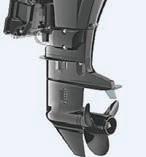

At an event in Wellington he was named the 2025 National Ambassador for Sustainable Farming and Growing and recipient of the Gordon Stephenson Trophy.




Attrill is the third generation on his Huinga dairy farm, where he milks 350 cows across the 163 hectare (142.86ha effective) property, taking a holistic approach that balances environmental stewardship with profitability.
She noted that Attrill has a thorough understanding of carbon emissions, in particular the differences between reducing absolute emissions and emissions intensity.
“Brendan certainly knows his numbers and can ‘walk the talk’ with how this is integrated into his farming operation.”


He was named Regional Supreme Winner at the Taranaki Ballance Farm Environment Awards (BFEA) in April, with regional judges noting that strategic planning underpins all Attrill’s on-farm decisions, guided by a strong focus on proactive environmental management.
The judging process for the Gordon Stephenson Trophy considers all 11 BFEA Regional Supreme Winners from across the country.
It includes on-farm judging as well as a panel interview, with the trophy recipients displaying a combination of an exemplar farming operation – from a financial, social and environmental perspective – and the ability to articulate informed responses and insightful views on a range of pan-sector topics.
Chair of the national judging panel, Karen Williams, said Attrill demonstrated exceptional communication skills, is wellinformed and can talk knowledgeably about different sectors.
“Brendan has extensive experience, both
The National Sustainability Showcase event at Tākina celebrated each of the 11 Ballance Farm Environment Awards Regional Supreme Winners from across the country. Hosted by the New Zealand Farm Environment Trust, the event is held annually as the pinnacle of the BFEA programme, and connects primary industry representatives from across the sector.

HERO: The late Chris Allen was posthumously named Rural Hero at the 2025 Primary Industries NZ Awards. The award was accepted by his wife Anne-Marie and children Natalie and Jono.
FUTURE: Federated Farmers Bay of Plenty sharefarmer chair
Bridie Virbickas is the 2025 PINZ Emerging Leader award winner.
THINKER: Strategic planning underpins all Brendan Attrill’s on-farm decisions, guided by a strong focus on proactive environmental management.
SUBSCRIBER
We’re survivors!
Today is the last day of our FY25 financial year.
I don’t know another ‘free’ national community newspaper anywhere that has navigated the previous two years without laying off journalists and analysts.
We held the line, kept our team intact, and pulled every lever we could to turn a significant FY24 loss into a modest FY25 profit.
Staying productive and keeping a hard lid on costs…that’s what you farmers do when returns drop, and so did we.
We also innovate and diversify, which is why we have a new Farmers Weekly voluntary subscription model for those who consume it through the free channels.
These days good journalism everywhere requires reader-subscriptions.
Advertising-paid journalism is shrinking.
But we don’t want to become subscription-only. The unaddressed ‘free’ delivery model is far cheaper, and it gets Farmers Weekly to 100% of farmers.
We also want to keep the farmersweekly.co.nz website 100% free.
So our subscriptions are 100% voluntary!
They’re also 100% necessary to retain quality agri-journalism and keep the Farmers Weekly business sustainable.
Please join us, and we’ll keep meeting those nasty weekly deadlines and commit to delivering you a comprehensive package of news, market insights and podcasts, and a website that is openly available to everyone everywhere.
We’re asking $120 annually.
That’s $2.50/week, $10/month, GST inclusive and fully tax deductible.
Thank you to the early-adopter Friends of Farmers Weekly so far. Your support is a massive boost.
You tell us you like reading Farmers Weekly as much as we like bringing you the agri-business information you need, so if you haven’t already, please join the team, kick-start FY26, and we’ll all survive and thrive together.

Dean Williamson – Publisher dean.williamson@agrihq.co.nz 027 323 9407
BECOME A VOLUNTARY SUBSCRIBER
Start your voluntary annual subscription today. $120 for 12 months. This is a voluntary subscription for you, a rural letterbox-holder already receiving Farmers Weekly every week, free, and for those who read us online.
Choose from the following three options:
Scan the QR code or go to www.farmersweekly.co.nz/donate
Email your name, postal address and phone number to: voluntarysub@farmersweekly.co.nz and we’ll send you an invoice Call us on 0800 85 25 80


Note: A GST receipt will be provided for all voluntary subscriptions.


From the Editor
Sinking feeling for shipping, again

Neal
Wallace
Senior reporter
WE HAVE previously written about how the planets have aligned for the primary sector.
Global demand and supply have combined to elevate to new levels prices paid for our meat, dairy and horticulture.
In a somewhat fatalistic view, it seems this may have been too good to be true, with at least one of those planets suddenly falling out of alignment.
Tensions in the Middle East boiled over recently when the United States bombed three Iranian nuclear facilities, escalating tit for tat military action between Israel and Iran and Iranian-supported terrorist units operating in several Middle Eastern countries.
Events then took a turn for the worse when Iran fired missiles across the Strait of Hormuz at a US airbase in Qatar, in retaliation to the US bombing.
The world is incredibly sensitive to military conflict and within minutes of news of the US bombing, oil prices, shipping insurance and shipping costs all escalated.
Those pressures were marginally diffused when Iran declared it would not threaten oil tankers using the Strait of Hormuz, the entry to the Persian Gulf, provided the US did not escalate the conflict.
That threat still remains, however, and commentators have speculated the Iranian regime is keeping that ace up its sleeve so it can internationalise the conflict by inflating oil prices should US President Donald Trump order another attack.
It is still possible shipping lines could divert away from the Gulf and the Suez Canal to the much longer route around the Cape of Good Hope, adding 14 days’ sailing while also avoiding servicing Gulf State ports.
While these global ructions are happening during our export off-season, there will be some nervous exporters watching how global politics play out in the next few months.
From a trade perspective, the Gulf States have been a fertile region for advancing NZ’s trade aspirations.
The Gulf Co-operative Council countries – the United Arab Emirates, Saudi Arabia, Bahrain, Qatar, Kuwait and Oman – are our seventh largest export market, worth $2.6 billion in the year to June 2024. They primarily buy meat, dairy and horticulture.
LAST WEEK’S POLL RESULT
This week’s poll question (see page 3): Have your say at farmersweekly.co.nz/poll Should the government be showing more urgency with its changes to the Environmental Protection Authority?
More than 80% of voters supported the introduction of biodiversity credits that recognise on-farm environmental improvements. “Many landowners are undertaking environmental improvements that have significant public benefit. They would like to do more, but funding is always an issue. Biodiversity credits could be a game-changer in terms of getting more win-wins for farmers and the environment,” one said.
Another believed farmers
Last September NZ reached a free trade deal with the United Arab Emirates, which immediately lifted duties on 98.5%, or $1.15 billion, of NZ exports.
Then late last year NZ struck a free trade deal with the remaining six Gulf nations, which will deliver free access for 99% of NZ exports over the next decade.
Depending on how long the military dispute lasts and the degree to which it escalates, it could take the shine off what has been a golden period for the primary sector – one which, by many accounts, was expected to continue into next season.
There will be some nervous exporters watching how global politics play out in the next few months.
As happens when trade is disrupted, it is not the disruption in the immediate site that has the greatest impact.
It is the ancillary effects of product being diverted to other markets that creates additional competition as companies fight for market share.
Producers can take solace that global demand and prices are high, especially in markets outside the Middle East, but also that our exporters are accustomed to dealing with logistical challenges.
This looks set to be another one.
should be recognised for the wider benefits to society achieved from their protection of New Zealand’s biodiversity. Of the 17.2% who voted no, one said people have got too carried away about environmental issues and tend to blame the farmers for everything. “For goodness sake just let us feed the world. We already have clean farming practices. We have had enough of the BS.” Another said there was too little information about the subject and what it may entail to agree.
Letters of the week Fish & Game not at fault
Casey Cravens Federation of Freshwater Anglers
THE views of Richard McIntyre and Jason Herrick, in the Federated Farmers article “Fish & Game advocacy function under review” (June 16), are hypocritical and deserve a response.
Mr Herrick wants to deny the angling public the right to advocate for healthy waterways while he wants to continue advocating for polluters. Surely advocacy is a democratic right in a healthy democracy?
I applaud the many farmers who are making real progress in mitigating runoff. And until this last fishing season, most Southland farmers have been community minded about fishing access. But Mr Herrick ended that goodwill when he called for farmers to withhold fishing access across their land.
His message implies that if you commit the unpardonable sin of environmental advocacy, you can’t fish.
Messrs McIntyre and Herrick’s verbal assault on Fish & Game and the trout fishing licensed public is wildly off the mark.
The reality is New Zealand’s public waterways are in a precarious state.
According to Environment Southland’s own research, 78% of river sites monitored for the last 21 years show declining trends in river health.
In a High Court of Appeal case in May of 2024, 52 expert witnesses testified that farm practices had seriously degraded most of Southland’s freshwater ecosystems.
Fonterra refuted any connection between intensive dairy and declining river health, but when the judge asked the dairy conglomerate to supply their own expert witnesses, Fonterra couldn’t produce a single one and lost the case.
Since the 1930s, different governments have attempted to seize control of the public’s fish and game and its predecessor acclimatisation societies. We are equally sceptical at the renewed effort. What Federated Farmers and the coalition government call for is not reform. It’s a hostile takeover.

Last week’s question: Do you support the introduction of biodiversity credits that recognise on-farm environmental improvements?
Eating the elephant Things left unsaid at farming conferences

Daniel Eb
Daniel Eb helps Kiwis connect with farming through his agency Dirt Road Comms and Open Farms. His family farms in Kaipara. eating.the.elephant.nz@gmail.com
IN THE week this piece runs,
I’ll be at Te Whiringa. It’s a hui run by Kore Hiakai, the collective of organisations working towards zero hunger in New Zealand.
I’m nervous.
I’m expecting to be very much out of my place there. My te reo will fall far short. There won’t be many large-scale farmers I can retreat to to talk about the season and the meat schedule. I’ll need to sit and listen to painful stories about Kiwi families facing impossible choices about food.
I’m expecting there to be tears and I expect, at times, to acutely feel my privilege as someone who has never experienced food insecurity. Though I sell words for a living, I’m expecting to be pretty lost for them there.
But I need to go. Because growth
doesn’t happen in comfortable settings.
Te Whiringa will be my third conference for the year. The first was Underground Festival – a two-day celebration of soil, food and farming where regen-minded farmers met to dig holes, talk pasture and share a locally grown feed. The second was E Tipu in late May – a space for food and fibre sector people to talk tech, big trends and innovation.
I’m really lucky that I have the chance to get along to these. They each offer something unique and all feel decidedly different. Taken together, I think they give me a more well-rounded perspective of our food system and the collective challenges we face.
Often at these events, it’s the things that are left unsaid that speak loudest. Early on at E Tipu, a slide flashed up with the four big strategies for NZ food and fibre –diversify our products, collaborate better, invest in sustainability and tell our story. These are bang on and pretty hard to disagree with. But we’ve been saying this stuff for decades now. There was plenty of talk about what we should do, but much less on why we aren’t doing it fast enough.
To quote strategy guru Seth Godin, “the hard part isn’t the doing, it’s the choosing to do”. It’s easy to say I need to exercise more – easier still to sketch out a workout plan. But actually going to the gym is hard. Unpacking why I won’t go is harder still. Answering “why not?” means sitting with uncomfortable perspectives and being challenged. It means disagreeing and speaking freely about failure.
I’ve spoken openly about my experiences using therapy to cope with my wife’s brain cancer. I can attest that this process of genuine reflection is hard and gruelling and can’t be done without seeking out the fresh perspectives. But it’s entirely worth it.
We are missing a trick in that our disparate food and farming communities – the suited and booted E Tipu goers, the regen farmers, the frontline food providers and others – continue to meet mostly in siloes. Increasingly, each group is talking about the others.
I encourage you to attend a food and farming conference that makes you nervous.
At E Tipu, food security and the need for a national food strategy was a recurring theme. There was broad acceptance in that community that any added valueadd play that leans into health and nutrition will be undermined by our, frankly shameful, national food security and health statistics. A country with the third highest obesity rate in the OECD and where 20% of people live in food security cannot export a credible health story. It just can’t. But of the 280 attendees there, just three people represented the food security space.
Similarly, there was plenty of talk at E Tipu about the potential of regenerative farming to build resilience into our food production systems and earn a global premium. Unfortunately, there
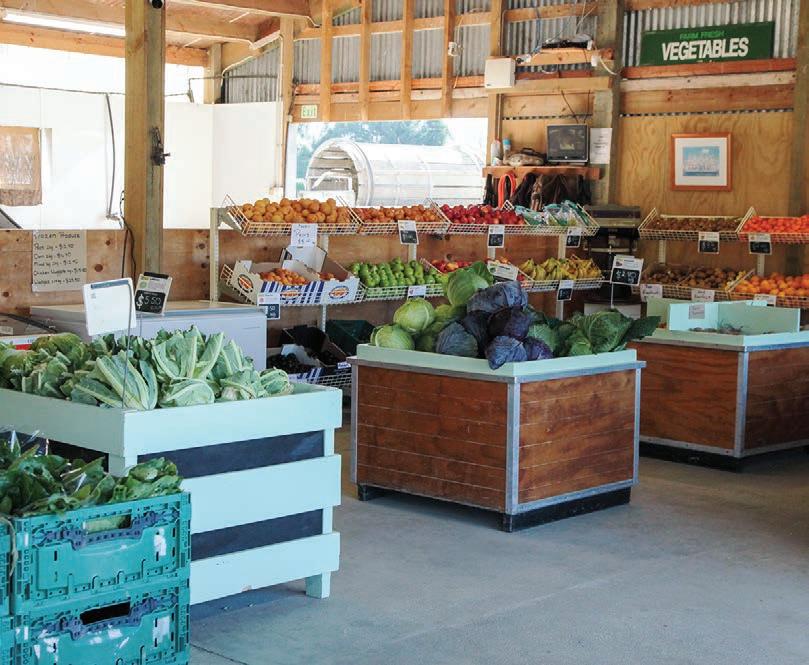
Daniel Eb hopes food and farming conferences start to look ‘like the sector we must become – nature-positive, equitable and profitable’. They should become places where large-scale farmers share lunch with frontline food providers.
weren’t many regen farmers in the room to hear it.
Conversely, at Underground Festival, the big, mostly unanswered, question was how the movement starts attracting the capital and sector support it needs to grow. The era of experimentation and early adoption is coming to an end for this community. The next group on the product adoption curve is the early majority.
These sceptical but open-minded farmers will likely move because the people and systems they rely on – advisers, bankers, levy body reps etcetera – encourage them to. Unfortunately, these types of folks were thin on the ground at Underground.
My hope is that our conferences start to look like the sector we must become – nature-positive, equitable and profitable. They should become places where largescale farmers share lunch with frontline food providers. Where regenerative farmers share a coffee with progressive bankers. Because when diverse people who care about the success of our sector and country get together, we find common ground. And that might be just the place to start doing the doing.
Until then, I encourage you to attend a food and farming conference that makes you nervous. If you see me there, come say hi and let’s be nervous together.
Mental health: meet people where they are
In my view …
RECENTLY, Minister for Mental Health Matt
Doocey announced a new Suicide Prevention Action Plan, something many of us have been hoping for. It’s heartening to see more emphasis on practical support for people in crisis.
Initiatives like “crisis cafés” and peer support workers in emergency departments are welcomed. Calm, safe spaces, led by people with lived experience, can make a powerful difference when someone feels like there’s no way out. But this kind of support must also reach our rural communities. Webinars and digital tools can help, but they don’t replace real human connection, which is vital for mental wellbeing.
In rural New Zealand, connection often happens in woolsheds, on sidelines, or over a cuppa at the local hall. We need more community connectors – trusted people who understand the
pressures and can help others feel safe enough to reach out. But the reality is, those best at this are already stretched. They’re mums juggling family and farm life, or volunteers constantly asked to do more.
The need is urgent. Suicide rates are around 40% higher for rural
CONNECTION: Webinars and digital tools can help with mental wellbeing, but they don’t replace real human connection, says Deanne Parkes.
men and 20% higher for rural women than in urban areas. Rural people face unique pressures, and our response must reflect that. There are practical solutions we could roll out right now. Build on the good stuff already happening and take support to where people already are: at bull sales, field days

and in shearing sheds, through mobile wellbeing units. Train rural professionals – stock agents, agri reps, contractors – in rural-specific mental health first aid.
Let’s also fund more rural facilitators already doing this work quietly in their communities. Group coaching for rural women, practical burnout tools, and tailored mental health training would make a meaningful difference.
We also need a central point of truth – one trusted place where rural people and professionals can find out what events are on, when, and how to access them. And we must stop dividing our efforts by sector. Dairy, sheep and beef, horticulture – rural life is interconnected. Our support systems should be too.
Preventing suicide in rural areas means doing more than talking. It means resourcing the right people, and equipping families with tools to reduce burnout and a feeling of being overwhelmed. People only reach out when they feel safe.
I know this from experience. It took years for me to ask for help, and I only did because I trusted the Rural Support facilitator I had connected with over time. That
sense of safety mattered more than I can explain. Just recently, the team from Spark That Chat was at the Hallmark Angus bull sale, having real, life-saving conversations. That’s what rural support often looks like, not clinical, but personal. Showing up. Listening. Sharing stories of hope. Sparking a chat that might save a life.
It took years for me to ask for help, and I only did because I trusted the Rural Support facilitator I had connected with over time.
We need to create rural crisis cafés that meet people where they are, not where the system expects them to be. This new Action Plan is a step in the right direction, but there a lot of work still to do. Because suicide is preventable. And the more we talk, listen, and build systems that truly support people, the more lives we will save.

Deanne Parkes Parkes, from Taupō, is a mental health advocate.
SHARING:
Sector Focus
Soft skills for robotic kiwifruit picker
Staff reporter TECHNOLOGY Horticulture
ATEAM from the University of Waikato is developing costeffective technology to help ease labour shortages in the horticulture sector and reduce fruit wastage.
Te Kura Mata-Ao School of Engineering senior lecturer Dr Ajit Pal Singh and his team of seven have been working on a new gripper, the component at the end of a robotic system that physically picks kiwifruit, much like a human hand does.
“One of the innovations is the actual gripper structure. The other is a soft ‘finger’ that attaches to the structure and gently interacts with the fruit so it doesn’t get damaged,” said Singh.
The team has received funding for the project from the MBIE Endeavour Fund through a Smart Ideas project.
Singh said there’s no point introducing robotics to an orchard if it’s going to damage the fruit.
“If the fruit is bruised or

BAN: Tomato grower and NZ Hothouse managing director Simon Watson says the MPI needs to ban imports of Australian brown capsicums to avoid a catastrophe for local tomato growers.
dropped, the benefit of robotic automation is lost. Our designs aim to reduce damage through their soft, flexible contact surfaces.”
Singh said the key challenge facing growers and industry is the labour shortage that’s amplified since covid-19.
“The labour shortages are putting pressure on the growers to recruit skilled workers to help them harvest the fruit, and if there’s not enough skilled workers on the ground, then there’s a lot of fruit that goes into the waste because it’s unpicked – so they’re losing money.”
The team’s long-term goal is to support growers with reliable robotic tools that reduce dependence on seasonal labour and help ensure more consistent harvesting outcomes.
Having tested the prototypes in the lab, they have recently begun preliminary field trials in an orchard with “quite promising” results showing effective fruit handling and minimal visible damage.
Unlike traditional designs with multiple joints or sensors, the
grippers use flexible, singlepiece structures that conform gently around the fruit, reducing mechanical complexity.
“These grippers are 3D-printed prototypes – single, jointless structures designed specifically for orchard use, not just lab testing.
“We wanted something that performs in real conditions: easy to maintain, robust and ready for the demands of the field.”
He also pointed out that because the grippers’ structures are single-piece designs, they could eventually be manufactured at scale using plastic injection moulding, making them even more cost-effective, durable and easy to produce in large quantities.
The plan is to test them thoroughly in the orchard this season, and Singh said the team will take them back to the lab to make any improvements.
“From an engineering point of view, our focus is on solving practical, real-world challenges. This project is a strong example of how innovative design can potentially deliver high-impact solutions tailored to industry needs.”

Tomato concern over capsicum imports

Gerhard Uys NEWS Horticulture
THE tomato industry is concerned that the Ministry for Primary Industries is not doing enough to protect it from a virus that could decimate the local tomato crop.
In August last year Biosecurity New Zealand placed import restrictions on tomato imports from Australia, after the detection of tomato brown rugose fruit virus (ToBRFV) at two South Australian growing properties.
But tomato grower and NZ Hothouse managing director Simon Watson said the virus also affects capsicums and chillies, and the MPI has not banned imports of these products from Australia he said.
There is a significant risk that
the virus could transfer from, for example, capsicum grown outdoors and be imported on affected plant material, he said.
Over the past six years only 1.3% of locally consumed capsicums were imported from Australia, with local growers growing over 13,000 tonnes of capsicums.
Watson asked why the MPI is taking such a big risk on such a small percentage of local consumer needs.
Infected properties in Australia were quarantined, crops destroyed and properties were banned from growing for an indefinite period, Watson said.
Business manager at TomatoesNZ Dinah Cohen said the industry body is concerned about the situation and is working with the MPI while it undertakes its review.
Biosecurity NZ deputy directorgeneral Stuart Anderson said there are controls in place that are working well for New Zealand and have prevented any issues for tomato growers.
We suspended tomato imports from all Australian states at the time.
Stuart Anderson Biosecurity NZ
“We suspended tomato imports from all Australian states at the time, and that remains in place.
“While New Zealand only imports Australian tomatoes from Queensland, an area free from this virus, we made the decision to suspend imports from all Australian states out of an abundance of caution.
“As part of the actions we took, tomato and capsicum seeds from Australia require testing for the virus prior to arrival in New Zealand, a requirement already in place for other countries where the virus is present. That requirement remains.
“Although Australia has announced they will no longer be pursuing eradication, all of the controls that have been in place to limit spread of the virus remain.”
New Zealand imports Australian capsicums from Queensland.
“ToBRFV has not been reported in any parts of Australia in capsicums and has not been detected in Queensland,” Anderson said.
Biosecurity NZ is working with the tomato sector and regularly meets with Australian officials to keep up to date of the situation, Anderson said.
Zespri eyes twice the value as it signs growth-focused China deals
Staff reporter
MARKETS Horticulture
ZESPRI plans to double the value of its fruit exports to four longterm Chinese partners over the next decade.
A memo of understanding has been signed with Joy Wing Mau and Goodfarmer – Zespri’s two largest distributors in China – and retailers Pagoda and Xianfeng Fruit – the largest fruit shop chains in China with around 7500 outlets between them.
Collectively the four companies represent around 80% of Zespri’s business in China, with the new agreements outlining a shared ambition to grow sales and sell fruit in 120 cities, up from the current 60, by the 2033/34 season.
The agreements were signed during Prime Minister Christopher Luxon’s trade delegation to China. Zespri board chair Nathan Flowerday was part of the delegation.
Chief executive Jason Te Brake said China is an important
strategic market for Zespri, with more than $1.4 billion in annual sales for Greater China and significant growth potential.
“We expect China to remain a strong market for us and these new strategic agreements with four of our long-term partners will help increase both sales and the number of cities where Zespri kiwifruit is available.
“We’re committed to providing natural nutrition and health to consumers around the world, including China, where we provided more than 1.5 billion
pieces of fruit last season.”
Te Brake said Zespri is on track this season to increase its volume in China by more than 8%.
“We really value the strong long-term relationships with our distribution partners and are proud to work together to increase sales and expand into more cities as we meet the growing demand for Zespri kiwifruit.”
The agreements include a commitment to working together on more sustainable consumer packaging initiatives.
We expect China to remain a strong market for us and these new strategic agreements will help increase both sales and the number of cities where Zespri kiwifruit is available.
Jason Te Brake Zespri
HANDY: Dr Ajit Pal Singh with the robotic gripper, which picks kiwifruit much like a human hand does. Photo: University of Waikato


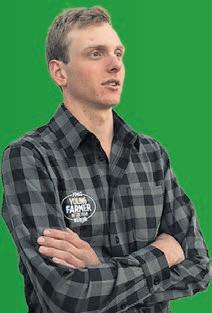





AS CONTESTANTS get ready to prove their agricultural prowess, the convenors behind this year’s FMG Young Farmer of the Year Grand Final are preparing the ultimate series of challenges set to test how seven young farmers will excel under pressure. Grand Final convenor Emma Wilson and Farmlet manager Chris Malcolm have spent countless hours configuring a weekend of tasks, modules, and a buzzer quiz, designed to test mental and
physical strength, skills, endurance and brain power.
“They’ve got a good variation of agricultural activities to do, and they’re definitely in for a long day,” says Chris.
If there was any piece of advice I’d share, it’s read the instructions properly.
Chris Malcolm Farmlet manager
From sheep and beef to deer and seafood, the Grand Final in Invercargill on July 3, 4 and 5 will showcase the very best of what Southland has to offer.
“We’ve been putting together an homage to what we do down here and what our local area covers,” says Emma.
“However, it doesn’t matter where the contestant has come from, they’ll have to brush up on their skills in every sector of agriculture,” Chris adds.
Chris comes from a background
of sheep shearing, having worked in the industry for the past 15 years. Not his first rodeo, it’s his second time on the committee for the Grand Final competition since the last time Invercargill hosted in 2018.
“I’m a bit of an old young farmer now, and I’ve competed in a few district competitions myself. If there was any piece of advice I’d share, it’s read the instructions properly,” he laughs.
Involved with Young Farmers since she was 20 years old, Emma



The making of ag’s most demanding contest
has been a regular, working different events over the past six years. Cutting her teeth on organising district and regional finals, she’s put her focus on getting stuck in and making things happen.
“If there’s one thing we want it is for the contestants to be worn out by the end of it. We’re putting them through their paces, and in true Young Farmers nature, we won’t take it easy on them.
“They’ll be finishing it proud of what they’ve achieved,” she says.




SUPER SEVEN: The FMG Young Farmer of the Year Grand Finalists are:, from left, Justin Ruygrok, Cameron Smith, George Letham, Gareth McKerchar, Jock Bourke, James Robbie and Hugh Jackson.






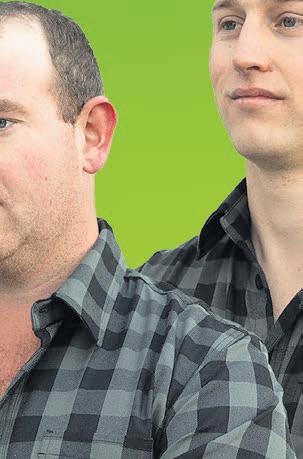




























Off the farm but still well in the groove
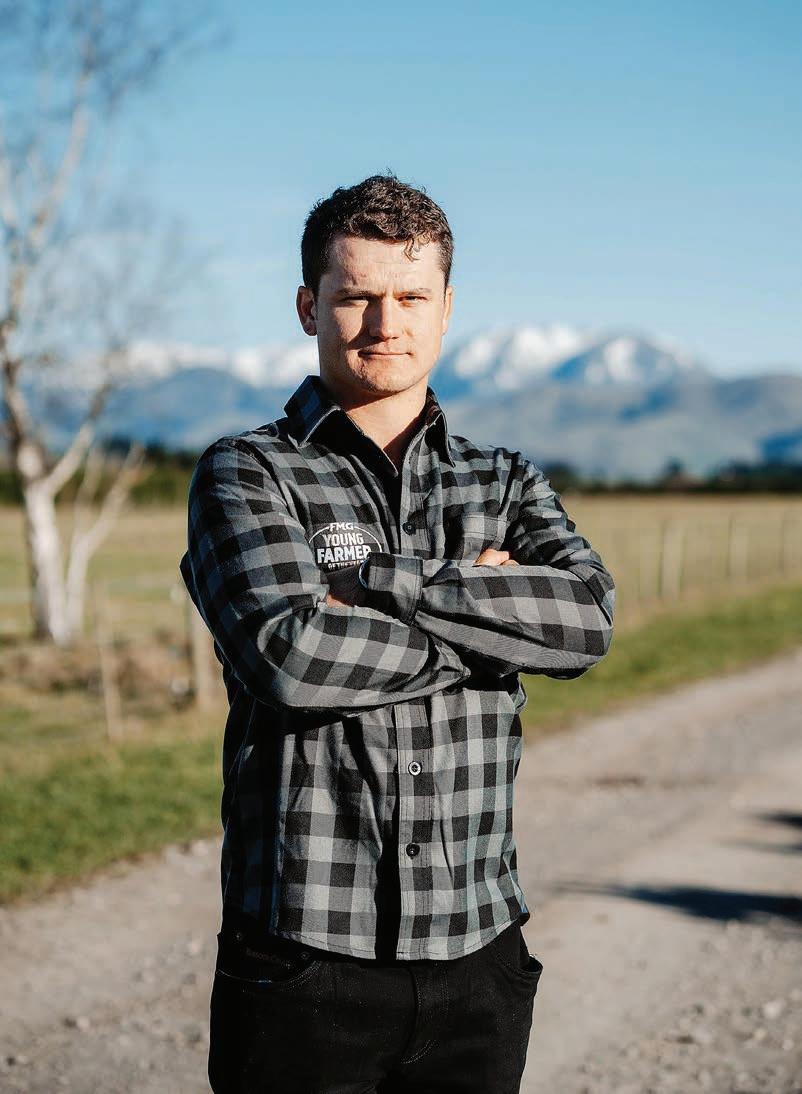
IT’S fair to say Gareth McKerchar has his hands full. In the past year he has started a new job, ramped up his studies and even become a father.
And now he’s added another challenge to his plate as he fights for the FMG Young Farmer of the Year title at July’s Grand Final.
“She’s full steam ahead,” he laughs. “I’m making it work even with less sleep.”
Fortunately for Gareth, it’s not his first FMG Young Farmer of the Year rodeo. Last year, the 26-yearold placed third in the Grand Final in Hamilton after a nail-biting buzzer quiz.
“Getting another crack at the title is exciting. It’s like, here we go again. It feels like it never really stopped. My foot’s been on the accelerator ever since the last season,” he says.
Knowing the ropes has made Gareth more comfortable – but the curveballs on the day still keep him on his toes.
“Now, I’m a bit calmer under pressure and I know what to expect in terms of how the weekend operates. Knowing that it would be quite a physical challenge, I really worked on my fitness this year which has helped.”
Asked why he wants to compete for a second time, Gareth is quick to respond.
Farming in his marrow after five generations
FOR this 25-year-old east coast farmer, farming is deep in his DNA. Five generations of it, in fact.
“Otapawa Station, the family farm and where I work, has been the ancestral home since the land was settled here,” James Robbie says.
In the steep and rugged foothills of the Puketoi Range, James spends his days mustering sheep, handling stock, and getting stuck into where his passions lie – on the family Hereford stud.
“I’ve been brought up in a classic sort of way, a typical rural upbringing. I grew up outside and in the sheep yards, really,” he laughs.
After his primary school closed down, James was sent to boarding school. Though raised in a closeknit rural community, he says his parents consistently exposed him and his sister to the wider world.
“It’s just how we were raised. My mum and dad have always been big on thinking how you represent yourself as a person. I run aspects of the business at the stud, and I think because of that, I’m very marketing focused across all the work.”
Not always a farmer, the 25-year-old had a short stint in the corporate world in Wellington after graduating with a degree
in international relations and political science.
“I’d always been told growing up that you’ve got to go out and do something different and challenge yourself, the farm will always be there. But after a few months in an office, the farm is where I wanted to be.”
Moving from Wellington back to Wairarapa, James has spent the past few years seizing opportunities in New Zealand’s cattle industry. From working on his family’s sheep and beef station to being invited to judge cattle in Mexico, living on ranch in the United States, and volunteering in his local fire brigade, the young farmer has had a lot on his plate.
We have so many amazing farmers coming out of this region, they humble me with their skills and knowledge.
James Robbie Otapawa Station
Adding FMG Young Farmer of the Year to the mix is nothing he can’t handle, he says.
“I give my all to everything, and I’m not afraid of that. I think that’s what makes me a bit of an
“Why not?” he replies. “I’m still young, keen and enthusiastic, and I figured that it would be easier to go two years back to back.
“It’s the best opportunity to have another crack straight away. It just made sense, and I reckon I can win it so I’m keen to go a couple of positions better.”
While Gareth doesn’t live on a farm anymore, he hopes his broad knowledge of farm systems and skills gained from his career will shine through in the Grand Final.
This year he started his job with Halter, working with cow collars and virtual fencing technology. He’s also out on his parents’ farm in Fairlie any chance he gets.
I’m still young, keen and enthusiastic, and I figured that it would be easier to go two years back to back.
Gareth McKerchar Aorangi
As he prepares for the Grand Final, Gareth is brushing up on his understanding of agribusiness, rural accounting, banking and finance.
Covering as much content as he possibly can, he hopes to lean on
Gareth McKerchar
Region: Aorangi
Occupation: Business development executive
Age: 26
Club: Pleasant Point
the knowledge and experience of past contestants and winners.
“I think that’s something I didn’t do enough of last year,” he says.
“This year I plan on getting a few pointers from people who have either won it or been a Grand Finalist.”
His advice for any young farmers thinking of competing next year?
Absolutely go for it.
“It’s such an awesome opportunity to learn new stuff and there’s no pressure to do really well.
“The people that run the modules are so passionate about whatever their area of expertise is, and they’re more than happy to just talk you through it and tell you a bit about what they’re up to.”
If you’re competing for the first time, just soak it up while you’re there, he says.
“It seems pretty daunting and stressful at the start but once you get into it, it’s great fun – just remember to keep an eye on your watch!”
James Robbie
Region: East Coast
Occupation: Sheep and beef farmer
Age: 25
Club: Puketoi
underdog.
“But as for the competition, I’ve genuinely got no idea what to expect, so I need to school myself up and get some pointers from past contestants.”
Chair of the Puketoi Young Farmers Club, James channels his energy into giving fellow farmers a leg-up in the local industry.
“We have so many amazing farmers coming out of this region, and every time we meet up, they humble me so much with their skills and knowledge. I really hope the other members feel inspired to put their hat in the ring in the future and have a go at their own Grand Final.”
If he won FMG Young Farmer of the Year, the first thing he would do is help change the wider perception of agriculture.
“I want to live in a New Zealand where the primary sector is really celebrated, where farmers are our champions and we look after the industry as such.”

His mission statement since university has been to increase awareness on “the good stuff we do” and help shape the food and fibre sector.
“I want to promote the fantastic job all the farmers and growers do
up and down the country. Yeah, there are challenges at times, and things that set us back. But I think on the whole, there’s room for a lot more good stories and education that can inspire the next generation to get involved.”
KNOWLEDGE: Gareth McKerchar doesn’t live on a farm anymore, but hopes his knowledge of farm systems and skills gained from his career will shine through in the Grand Final.
MESSAGE: James Robbie’s mission statement since university has been to increase awareness on ‘the good stuff we do’ and help shape the food and fibre sector.

A man of few words, but plenty of skills
JOCK Bourke is a man of few words, but out on the farm he packs a punch.
At just 19 years old, he was the youngest contestant in the FMG Young Farmer of the Year Taranaki Manawatū Regional Final, claiming the win for his chance at national glory.
How did he feel about this?
“Yeah, pretty stoked.”
The third-year agricultural science student grew up on a sheep and beef farm in Hamua, Eketahuna, learning the ropes from his parents. His father, he says, is his biggest mentor in the field.
“I’ve always enjoyed working with animals and with my parents. We’d feed out hay bales from the back of an old trailer and I learnt how to drench alongside my old man.”
Although becoming a Grand Finalist came as “a bit of a surprise”, Jock felt it was his university studies that gave him that extra leg up.
“You get a lot more of the business and science side of things that maybe everyday farmers don’t get to learn a lot about,” he says.
As he studies towards a Bachelor of Agricultural Science at Massey University, Jock gives kudos to his high school agriculture teachers,
who encouraged him to enrol in the first place.
“They kept pushing me to study at Massey, and I’m glad I did, because it’s turned out to be a very supportive environment.”
During the university breaks, Jock manages to get out on the farm to brush up on his practical skills and put his knowledge to the test.
He says it was his upbringing on the farm that gave him the necessary skills to be a successful competitor and hopes this will give him an advantage in July’s Grand Final.
People in the region have also been really supportive and offered to help in the lead-up to the final.
Jock Bourke Hamua
“While I like uni, I still prefer a more ‘hands on’ approach, and I get the best of both worlds when I can put my knowledge to practice, and problem solve with what I’ve learnt on farm and in class.”
Jock joined his NZ Young Farmers club three years ago
Jock Bourke
Region: Taranaki Manawatū
Occupation: Agricultural science student
Age: 19
Club: Massey
when he began his studies and says it’s helped teach him how to collaborate with people and facilitate events that Massey young farmers members would be interested in.
“It would be great to see more people getting involved, even those who are a bit hesitant to join. It’s a great culture to be around and there’s heaps of opportunities for learning and meeting new people.
“The change from Junior Farmers to Young Farmer of the Year was definitely a big step up but the support and encouragement from past contestants and farmers alike has made the transition easier,” he says.
“Lots of past contestants have offered to help me with their resources. People in the region have also been really supportive and offered to help in the lead-up to the final.”
Asked what his dream is, Jock

doesn’t hesitate to say he’d like to return to the family farm.
“Whether I’m owning it or
managing it, that would be pretty cool. That’s a goal I’m always working towards.”
A solo farmer with community backing

THERE’S no place like home for sharemilker Justin Ruygrok.
The 28-year-old farmer works on a dairy farm in Aka Aka, a small town 45 minutes south of Auckland.
After finishing boarding school and earning his Diploma in Agriculture, Justin found himself drawn back to his roots, setting up just down the road from the farm he grew up on.
“You can’t beat growing up on a farm,” he says. “There’s no better upbringing so I’m really grateful for my childhood.”
With Justin’s parents being passionate dairy farmers, it seemed logical for him to throw his hat in the ring too.
“I love the diversity of what farming has to offer.
“It enables you to almost be a jack of all trades with everything that’s involved.”
A typical day for Justin starts at around 5:30am to milk the cows, sometimes earlier if he wants to
Justin Ruygrok
Region: Northern
Occupation: Sharemilker
Age: 28
Club: Franklin
squeeze in a bit of fishing to start his day right.
“It’s always good to get off the farm and do some hunting and fishing from time to time,” he says.
“I’ve aways had a love for the outdoors.”
No stranger to his own company, Justin has worked solo for the past eight years. But he’s far from feeling lonely – the group of keen Young Farmers in the area keep him company with their regular catch-ups.
“We always ring each other up, it’s like our own little community. Some of the boys have boats so we go out on the river after we’ve finished milking. It usually ends with a trip to the pub,” he laughs.
“It’s great to have discussions with others, even in the tough times. I suppose it’s pretty reassuring to know that people are going through similar things to you and are there to offer support.”
Initially, Justin didn’t know much about the FMG Young Farmer of the Year competition, until he spoke to Season 54 winner Tim Dangen, who encouraged him to get involved at a Young Farmers meet-up.
Inspired to give it a go, Justin surprised himself with how much he enjoyed the Regional Final.
“I put the work in, gave it a fair crack and it paid off. I was pretty
I think it’s always good to try and encourage young people to get into the industry because it’s awesome to be part of.
Justin Ruygrok Aka Aka
stoked to win.”
Looking ahead to July’s Grand Final, the young farmer plans to talk with past contestants while counting on his own experience to give him a competitive edge in the competition.
“I like to think I’m quite practical. I’ve had a bit of experience just being a solo farmer. I’ve also had a lot of people offer to help me in the lead-up to the Grand Final, as well as having my little support crew, which has been really cool.”
As for the future, Justin is working towards land ownership and would love to see the younger generation getting involved in the farming industry.
“I think it’s always good to try and encourage young people to get into the industry because it’s awesome to be part of.
“It’s how I got to where I am now,” he says.
SKILLS: During the university breaks, Jock Bourke manages to get out on the farm to brush up on his practical skills and put his knowledge to the test.
INVOLVEMENT: Justin Ruygrok is working towards land ownership and would love to see the younger generation getting involved in the farming industry.
One more helping on a very full plate
BETWEEN running a business, managing a farm, and preparing for his first child, 28-yearold Cameron Smith has plenty on his plate. But rather than slow down, he’s setting his sights on the prestigious FMG Young Farmer of the Year title.
“I’m making a game plan for it –I know who I need to talk to, and what I want to do,” Cameron says.
“My wife and I are pretty well known down here in Southland. There’ll be a heap of people cheering us on, so there’ll be a fair bit of pressure with that I reckon. Bring it on!”
Cameron’s role as a dairy farmer keeps him busy, but he’s not going it alone.
His wife Nicole, who he met through school a decade ago, has been steadfast in her support.
With strong connections to last year’s winner, George Dodson, and a Young Farmers Club and community rallying behind him, Cameron has been getting as much advice as he can through his network of mentors and friends.
“I’m pretty biased, but I reckon Southland is the best place in the country. Like, not only are people good buggers, but they genuinely want to help.
“While there’s no secrets out there, the competition is still bloody stiff.
“If you can take out the region of Otago and Southland, you’re probably halfway there to be honest.”
Leading up to the Grand Final, I’m throwing myself into every opportunity I can find to learn.
Cameron Smith Southland
Cameron thinks what gives him his edge is his willingness to give everything a crack.
“I’ve always wanted to be good at everything, not perfect in a few things. Leading up to the Grand Final, I’m throwing myself into every opportunity I can find to learn.”
Currently developing a farm with his wife, the ultimate dream is to one day run his wife’s family farm and a farm of their own as well, so that they can provide opportunities for the next generation.
“We want to give back to the
younger people coming through,” he says. “We’ve all had pretty good farm owners and mentors who have taught us the ropes. We want to create those same opportunities for other people and encourage young people to start their own businesses and succeed.”
He and his wife already scored a win at the Dairy Industry Awards last year as Otago Southland Share Farmers of the Year.
Claiming a prize at FMG Young Farmer of the Year and knowing his Young Farmers Club is rallying behind him would be the cherry on top.
All that he advocates for leads into what Cameron would do if he won, bridging the rural and urban divide.
“A lot of people in town are interested in farming, but many don’t have exposure to it. We’re really passionate about helping change that.”
Cameron Smith
Region: Otago Southland
Occupation: Dairy farmer
Age: 28
Club: Thornbury
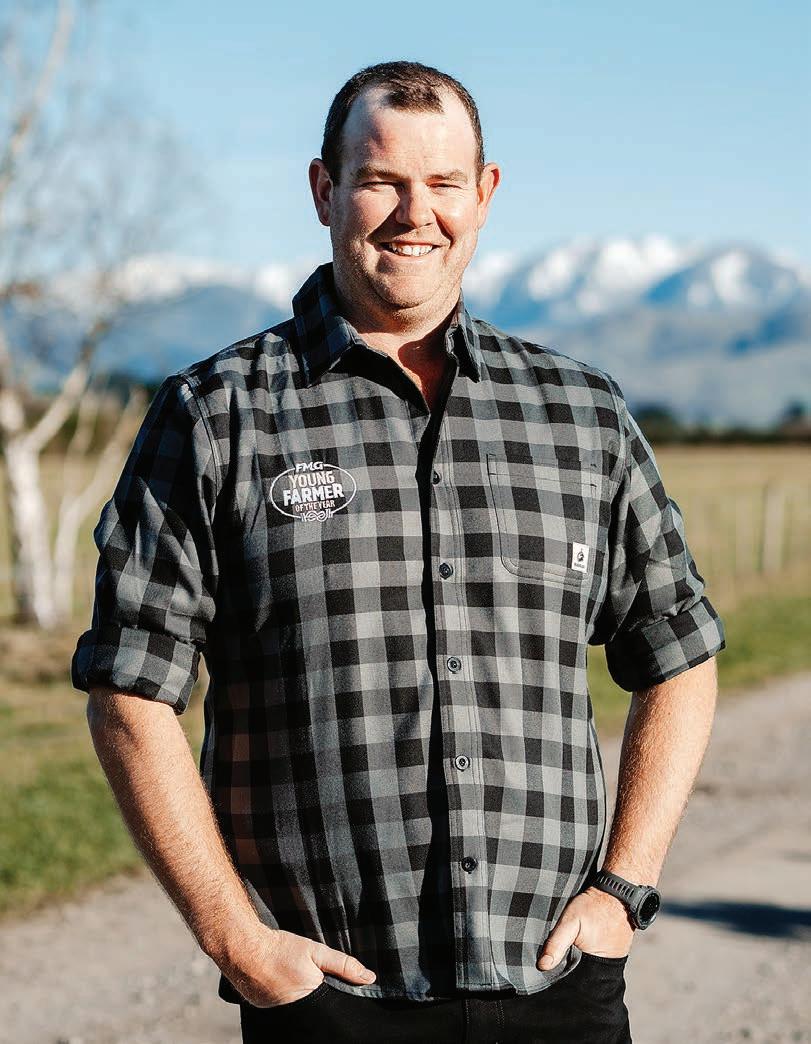



























SUCCESS: Cameron Smith and his wife Nicole scored a win at the Dairy Industry Awards last year as Otago Southland Share Farmers of the Year.

George the Second back for another bite

NETWORK: George Letham says he feels lucky to have a great support network who are keen to help with his training, particularly his parents.
GEORGE Letham has unfinished business but is ready to wrap things up with a win.
The 27-year-old farmer came second to Young Farmer of the Year Season 56 winner George Dodson in last year’s Tasman Regional Final. Currently on the leaderboard this season, there’s nothing stopping the young dairy farmer going for gold at the Grand Final in July.
“I’m super proud of George Dodson and what he’s done, but it did kind of leave me with a bit of unfinished business,” he laughs.
Following the farming pathway from a very young age, George grew up on the banks of Rakaia on the Canterbury Plains. It was his parents who encouraged him to get involved on the family farm.
“I embraced that and became really passionate about who farmers are and how rural communities work.”
George spent his early twenties at Lincoln University studying towards a degree in agricultural science before working at PGG Wrightson Seeds.
Returning to his roots, he ran his family farm for two years and recently completed a graduate programme with Fonterra, where he now works as a farmer support and relationship adviser.
“I miss being out on the farm, but I do still have a finger on the pulse with how the business is done.
Ready to finish that unfinished business
LOOKING out to the Tasman Sea, Hugh Jackson spends his days working on the family farm.
The returning Grand Finalist moved back to his hometown of Te Akau two years ago.
“I really enjoyed my time in Southland, but returning home is something special. There is some family history here and it’s a pretty cool thing to be a part of.”
Now, the 26-year-old will be stepping into the spotlight for his chance at FMG Young Farmer of the Year. Season 57 marks his second attempt, and as his current preparation stands, the young sheep and beef farmer has unfinished business.
“Winning the Grand Final is a dream of mine,” Hugh says.
“I’ve been there before and got in the top three, which gave me a bit of confidence knowing that I’m capable of doing it.
“If I can put in the hard yards before July, I’ll give myself every chance to win it. I don’t know when I can enter again, and the old man’s getting older, so it’s starting to feel like it’s now or never.”
Deeply involved in his local Young Farmers club, Hugh spent
last year helping with the Regional and Grand Final in Hamilton.
Helping design the regional Practical Day and national Technical Day has helped him see how the competition works from behind the scenes – but it’s no unfair advantage.
“Every season is different, and you never know what to expect.”
Stepping up as chair for the Hamilton club this year, Hugh hopes his Young Farmers involvement, connections in Southand, and growing experience will help give him that edge. He’s also been practising with previous winner, Emma Poole, and her husband Chris.
“All of these opportunities I hope will give me an advantage to help prepare me the best I can,” he says.
“Helping to get the Hamilton City Young Farmers Club to
If you’re farming tomorrow the same way you’re farming today, then you’re just getting left behind.
I’m lucky that I can still be pretty hands-on with my family’s farm on the weekends, while working a job that gets me out into the community,” he says.
“One day the dream would be to go back there and have a crack at it myself.”
Last year, George threw his hat in the ring for first time at the FMG Young Farmer of the Year, and he wasn’t shy to admit he’d had no idea what to expect.
I come from these rural communities, and I just love them so much, so I’d like to put that on display for the rest of New Zealand.
George Letham Tasman
“Getting second last year showed me what I was capable of, and this year, with a bit of preparation, what I have the capability to do when I push myself hard enough.”
When it comes to mentorship, George says it takes a village and he feels lucky to have a great support network who are keen to help with his training, particularly his parents.
George Letham Region: Tasman
Occupation: Farmer support and relationship adviser
Age: 27
Club: Banks Peninsula
Hugh Jackson
Region: Waikato Bay of Plenty
Occupation: Beef farmer Age: 26 Club: Hamilton
where it’s at now has been super rewarding. Returning with a win for them and the community would be the icing on top.”
With an interest in technology on farm, and a passion for mental health, Hugh is continually working towards growing the farm for the next generation.
While his dad is sick of shifting bulls, Hugh enjoys the “dog work”. But he hopes that, when he’s the age his father is now, he’ll be able to shift things using his phone.
“If you’re farming tomorrow the same way you’re farming today, then you’re just getting left behind,” he says.
“Technology is advancing every day, and there’s some pretty huge opportunities that will allow us to run more profitable and environmentally sustainable businesses going forward.
“It’s exciting,” he says.
Asked what he’d do if he won
The young farmer also takes his hat off to the event organisers and sponsors that keep the competition running.
“Without them it really would just be a bunch of passionate young people digging fence posts in a paddock. Young Farmers gives us an opportunity to connect and be recognised both by our peers and around New Zealand.”
While George isn’t “counting his chickens before they hatch”, if he won the title, he’d use the opportunity to have an influence on the dairy industry and see more young people get into agriculture and farming.
“Farming doesn’t always get the best rep, so I’d like to do my part to rewrite the record and put it on the map as a really cool thing for young people to get into.
“They’ve been fully behind me and really supportive. They use a tough-love approach and highlight my weak points and things I need to work on,” he laughs.
“I come from these rural communities, and I just love them so much, so I’d like to put that on display for the rest of New Zealand.”
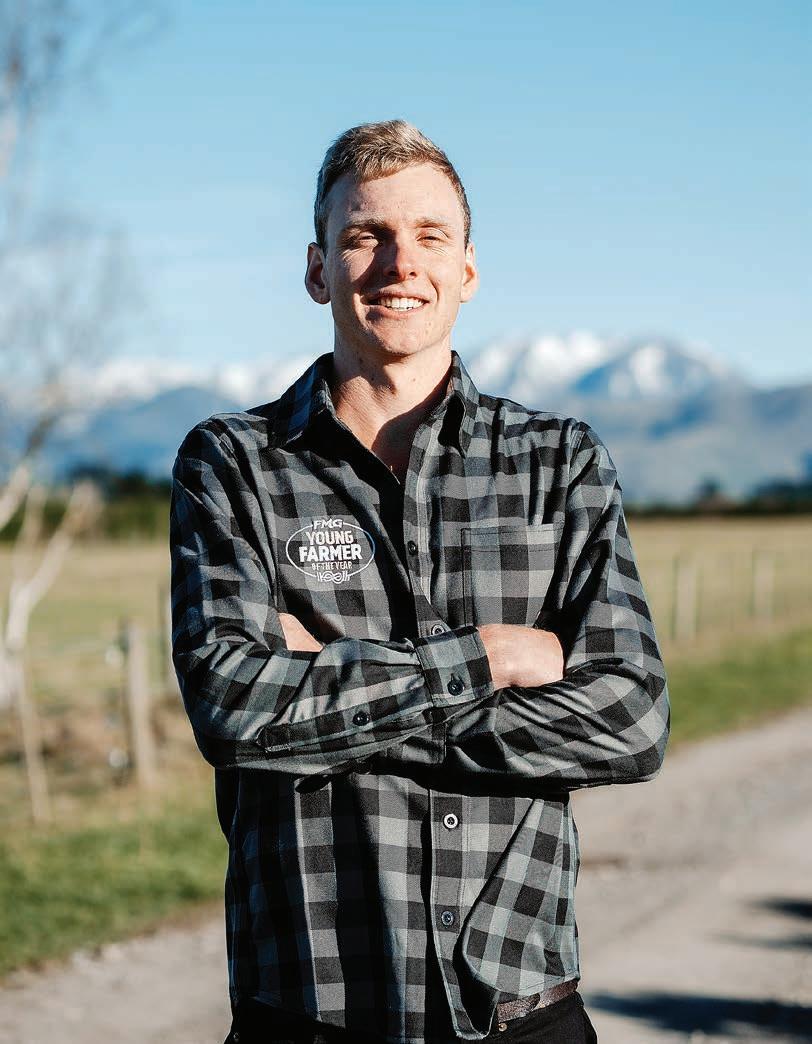
FMG Young Farmer of the Year, “shooting home to the farm” is first on his list.
“I would’ve been away for a few days by then,” he laughs. “But as
far as trying to help the industry, I’d try and use it to showcase the opportunities that are out there and attract as many good people to farming as possible.”
FUTURE: With an interest in technology on farm, and a passion for mental health, Hugh Jackson is continually working towards growing the farm for the next generation.
Hugh Jackson Te Akau
The next generation of farming talent steps up
THE future of farming is in good hands as 14 FMG Junior Young Farmer of the Year teams prepare to battle it out at one of New Zealand’s most prestigious annual farming events.
The two-day Grand Final contest for secondary school students will see the top two teams from each region come together to take on challenges designed to test their farming knowledge, capabilities, practical skills and how they excel at problem-solving under pressure.
The winning duo will be crowned FMG Junior Young Farmer of the Year at an awards ceremony on July 4 in Invercargill.
It’s the second time Napier Girls High School students Liana Redpath and Kaela Brans have qualified for the Grand Final, and as graduation approaches, the pair will be giving it all they’ve got in their last chance at securing the Junior title.
Whether they win or not, the two hope to inspire more girls and women into agriculture.
“Women shouldn’t be afraid of
entering the ag industry. We want to show what you can achieve by exposing the girls to what’s out there and broadening their horizons,” Kaela said.
Growing up on sheep and beef farms in central Hawke’s Bay and Mātāwai, the two 17-year-old boarders are in a unique position as they prepare for the Grand Final away from home.
We are very smart and we’ve done it three years now, so we have a bit of experience and knowledge.
The Oinks, aged 11
School
“We’re taking any opportunity we can get at the moment.
Although we can’t do as much practical preparation compared to other competitors, our backgrounds have set us up with a good foundation,” Kaela says.
“We’re just absorbing any information we’re given or any opportunities we’re presented with
to give ourselves the best chance,” Liana adds.
It’s Liana and Kaela’s third time working together as a team. After five years of friendship, they know how the other works under pressure.
Alongside the Junior competition, the top primary-aged teams from across New Zealand will be competing in the AgriKids Grand Final.
Two teams from the Tasman region are confident the secret to winning is great teamwork.
The youngest generation of farmers are eagerly preparing ahead of the Grand Finals, where 63 primary school contestants will showcase their farming skills and battle it out to be crowned AgriKidsNZ Grand Champions.
The members of one of Seddon School’s finalist teams, The Oinks, made up of Fred Maher, Manawa Doonan and Liam Underwood, are no stranger to the competition, having qualified for the Grand Finals for the last three years.
The three 11-year-olds, who have been mates since pre-school, are confident they will take out the

AgriKidsNZ Grand Champions title this year.
Why?
“Because we are very smart and we’ve done it three years now, so we have a bit of experience and knowledge,” they are quick to answer.
Teammates Isabella Pitts and Emma March from Seddon School, and Madi Lunn from Ward School, echo Liam’s excitement about the race-off.
“We love working together and sharing our knowledge,” The Cattle Girls agree.
Jacqui Ayers, a teacher at Seddon
School, says AgriKidsNZ is one of the highlights on the school calendar.
“It brings the kids together. It’s awesome to see them out there getting stuck in,” she says.
New Zealand Young Farmers chief executive Lynda Coppersmith says it’s rewarding to see the youngest generation of Young Farmers compete with such knowledge, passion, and enthusiasm for the industry.
The winning team will be crowned the 2025 AgriKids NZ Champions at an awards ceremony on Friday 4 July in Invercargill.











BACK TO BACK: Napier Girls High School students Liana Redpath and Kaela Brans have qualified for the Grand Final for a second time.
Seddon
FEDERATED FARMERS

Feds advocacy helps axe Ute Tax 2.0
Federated Farmers is welcoming confirmation from the Government that proposed changes to Fringe Benefit Tax (FBT) on farm utes will not go ahead.
“This is a major win for rural New Zealand and a direct result of strong advocacy from Federated Farmers,” the organisation’s transport spokesperson Mark Hooper says.
“We pushed very hard as soon as we got a sniff of the issue and made it clear these changes would amount to a Ute Tax 2.0.
“It’s pleasing to see the Government has listened.
“It’s a great outcome for our members and for common sense –and it will save farmers an absolute fortune each year.”
The National Party moved on 19 June to categorically rule out Inland Revenue’s proposal to dramatically increase the tax burden on work vehicles like farm utes.
The move follows pressure from Federated Farmers and others who warned the proposal was unfair, unaffordable and disconnected from the reality of farm life.
“Farmers would have been incredibly concerned if this had gone ahead. It was effectively a stealth tax on the sector,” Hooper says.
“We were very concerned the Government was consulting on new rules that could have added thousands of dollars of additional tax payments each year.
“This would have been a huge cost for farmers, tradies and other productive New Zealanders, and

SCRAPPED: Having called quickly and loudly for Simon Watts to rule the changes out, Federated Farmers is pleased to see the Government act.
would unfairly punish the legitimate use of these work vehicles.
“The previous Government’s Ute Tax was bad enough, but at least that was a one-off cost. These new FBT charges would have been annual and cost farmers an arm and a leg each year.”
Under the proposal, utes costing over $80,000 and provided to farm
owners or other major shareholders would have been taxed at 100% of their value (capped at $80,000), even if used almost exclusively for farm work.
That would have resulted in an annual tax bill of between $5500 and $8200.
Everyone else, like employees and sharemilkers, would have been
taxed on 35% of the ute’s value –around $1800 to $2700 annually for a $50,000 vehicle.
“The old system at least allowed people to keep logbooks and potentially pay less tax if the private use was genuinely small,” Hooper says.
“The Government was shaping up to scrap that and slap a flat tax on nearly every farm ute in the country – even if the ute almost never left the farm except to drive home.”
Hooper says the proposal completely ignored the reality of how farmers use their vehicles, often crossing public roads between blocks or driving into town for supplies at Farmlands or the vet.
“These are not Queen Street vanity purchases or Remuera tractors. A four-wheel drive ute is a core piece of equipment that farmers need to do their job each day.
“If it leaves the farm to get fencing gear or pick something up from the vet, that’s still work. But under these new rules, it would have been taxed as private use.”
The lack of clear direction from Ministers had caused growing anxiety in rural communities.
The IRD’s consultation period closed on 5 May, but farmers were still waiting for certainty as recently as mid-June.
“Federated Farmers was one of the first and loudest voices to call on Revenue Minister Simon Watts to rule the changes out,” Hooper says.
“The proposal would have undone the good work of the Government’s recently announced Investment












































It’s a great outcome for our members and for common sense – and it will save farmers an absolute fortune each year.
Mark Hooper
Federated Farmers transport spokesperson
Boost tax deduction, which allows farmers, tradies and other businesses to write off a big chunk of the cost of new assets like utes.
“Unfortunately, all that good work risked being pointless if the Government was giving with one hand and taking with the other.
“We made that point loud and clear, and thankfully it’s now been heard on the top floor of the Beehive.”
In a public statement, National said it would not be hitting Kiwis with any new taxes on utes – full stop –and that included FBT changes.
Hooper says Federated Farmers will always stand up for policies that reflect the day-to-day reality of farming, no matter which Party is proposing them.
“Our rural members told us loud and clear that this was a priority issue, and we’ve delivered a result.”
“The decision to walk away from the FBT changes is a positive sign the Government is listening to the rural voice – and acting on it.
“This is exactly why Federated Farmers exists – to fight for practical, fair policy for New Zealand farmers.”

Forestry conversions worse than feared
Federated Farmers says the situation with whole-farm conversions to forestry is even worse than previously thought, and urgent policy clarity is needed to stop further damage to rural communities.
New research released by Beef + Lamb New Zealand shows 300,000 hectares of sheep and beef land has now been sold into forestry since 2017, up from the 260,000 hectares previously reported.
Much of it is being converted for carbon-only forestry, often through Overseas Investment Office approvals.
“These updated figures are alarming and confirm what farmers have long feared – that landuse change is accelerating at an unsustainable pace,” Federated Farmers Forestry meat and wool chair Toby Williams says.
“This isn’t just about hectares lost – it’s about breeding stock. That land has taken hundreds of thousands of ewes out of our system, and we’re already seeing the impact.
“This season alone, lamb processing is down by a million head, and that has our meat

MISUNDERSTANDING: Most farmers would assume implements like augers, rollers or drills fall under the farm contents category – which could prove costly, David Birkett says.
processors in a very fragile state. All New Zealanders should be seriously concerned.”
Fewer lambs mean lower export volumes, reduced processing jobs, and tens of millions of dollars not returning to rural communities or circulating in the economy.
Farmers should be encouraged to plant trees in a way that improves their business and their land – not pushed out by large-scale carbon farms that gut our livestock numbers.
Toby Williams Federated Farmers meat and wool chair
Williams says Federated Farmers supports forestry as part of a balanced land use approach –including farmers planting some of their own land and earning carbon credits.
On his own 1500ha East Coast farm, 100ha is in forestry and he’s actively looking to plant more.
“I’m not anti-forestry at all. Integrating trees into the right parts of your farm makes a lot of sense – environmentally and economically.
“The real concern is whole-farm conversions, particularly by overseas companies chasing carbon credits.”
He’s calling on the Government to urgently tighten the rules to ensure the ‘intent to plant’ is genuine and aligned with policy limits.
He also points to murky practices, such as forestry companies using standing seedling orders to get around restrictions.
“What we need is clarity and certainty.
“Farmers should be encouraged to plant trees in a way that improves their business and their land –not pushed out by large-scale carbon farms that gut our livestock numbers.”
Williams says the 300,000ha figure should be a very loud wake-up call for the Government.
“We simply can’t afford to lose another 200,000 ewes. The knock-on effects for jobs, exports and rural life are just too great.”

Is your machinery covered by insurance?
Federated Farmers is urging farmers to double-check their insurance policies to ensure key pieces of farm machinery – especially anything towed – are correctly categorised and fully covered.
It follows a recent case where a Canterbury farmer’s insurance claim for a damaged auger was declined, because it wasn’t listed under the correct category.
“This case has really highlighted the need for farmers to check their machinery is covered correctly, so you don’t get a nasty surprise,”
Federated Farmers Arable Chair David Birkett says.
“The auger was towed behind a
vehicle, which made it a vehicle in the eyes of some insurers, not plant or machinery.
“In short, if it can be towed, it’s a vehicle.
“So, if you haven’t specified that item as a vehicle in your insurance policy, it may mean you have less cover than you think for gear that’s worth much more.”
Most farmers would assume implements like augers, rollers or drills fall under the farm contents category.
“That misunderstanding could prove costly,” Birkett says.
“It might take only half an hour to check your insurance details, but it could save you a lot of money.”

FMG Insurance confirms that augers and other wheeled or towed implements should be covered under a Farm Vehicle policy, not Farm Contents.
“As a general rule, if the item is
This case has really highlighted the need for farmers to check their machinery is covered correctly, so you don’t get a nasty surprise.
David Birkett
Federated Farmers Arable Chair
self-propelled, has wheels used to move it, or needs a vehicle to function, it should be insured under a Farm Vehicle policy,” an FMG spokesperson says.
FMG defines a farm vehicle as any self-propelled, tractor-drawn, trailertransportable or mounted vehicle or implement used for farming – including accessories and spare parts.
The company encourages all farmers, regardless of their insurer, to ask questions if they’re unsure about what is and isn’t covered.
“We just want to make people aware of the issue,” Birkett says.
“It could catch a lot of farmers out.”

CONCERNS: Toby Williams, who has 100ha of forestry on his own Gisborne farm, says he’s not anti-forestry at all, but his concern is wholefarm conversions, particularly by overseas companies chasing carbon credits.
Feds wants minister to rule out more tax
Federated Farmers is calling on the Revenue Minister to rule out yet another tax, this time a controversial Inland Revenue proposal hitting the notfor-profit sector.
Under the proposal, organisations like Federated Farmers would be taxed on their membership subscription income for the first time.
“We’re calling on Simon Watts to move quickly and categorically take this off the table,” Federated Farmers board member Richard McIntyre says.
“This is not a routine tax consultation – this is a significant new interpretation that overturns 20 years of settled practice.”
Ideally, Inland Revenue would withdraw its draft interpretation but, failing that, the Minister must step in, McIntyre says.
“This isn’t a minor tweak – it’s a fundamental shift in how the Inland
Revenue Department (IRD) interprets the law.
“It would have serious consequences for New Zealand’s not-for-profit sector.”
Under current practice, notfor-profits structured as mutual associations – organisations set up to serve their members rather than make a profit – aren’t taxed on income they receive from members.
This has the hallmarks of a desperate revenue grab dressed up as a legal interpretation.
Richard McIntyre Federated Farmers board member
This principle, known as mutuality, is based on the idea that a group of people cannot make profit from dealing with themselves.

STRUCTURE: Under current practice, not-for-profits structured as mutual associations – organisations set up to serve their members rather than make a profit – aren’t taxed on income they receive from members.
However, IRD is proposing that if a not-for-profit is constitutionally prohibited from distributing profits to members, as most are, its member income should be taxed.
“This would pull the rug out from under about 9000 not-for profits, advocacy groups, professional associations, unions, community organisations, and political parties who rely on membership fees to fund their operations,” McIntyre says.
“This is not just about Federated Farmers – it’s sector-wide and is creating huge concern.”
The IRD’s draft relies heavily on an Australian legal precedent – the Coleambally Irrigation case – which found mutuality does not apply when there is a legal bar on profit distribution.
But Federated Farmers argues this is a poor precedent to import into New Zealand, noting that Australia’s Parliament had to step in and reverse it with legislation after significant backlash.
New Zealand’s not-for-profit framework is different – but the harm from adopting this interpretation would create exactly the same confusion and harm, McIntyre says.
Federated Farmers’ submission urges the IRD Commissioner to withdraw the proposal and reaffirm the non-taxable status of genuine mutual income.
“Ultimately, this is now a political question. The Government cannot allow the Inland Revenue to unilaterally rewrite tax policy that affects thousands of organisations,” McIntyre says.
“This is why the Minister needs to rule this out publicly. Tax policy decisions of this magnitude belong with elected representatives, not faceless tax officials in Wellington.”
Federated Farmers has submitted on this consultation draft.
The submission questions why IRD is pursuing the change
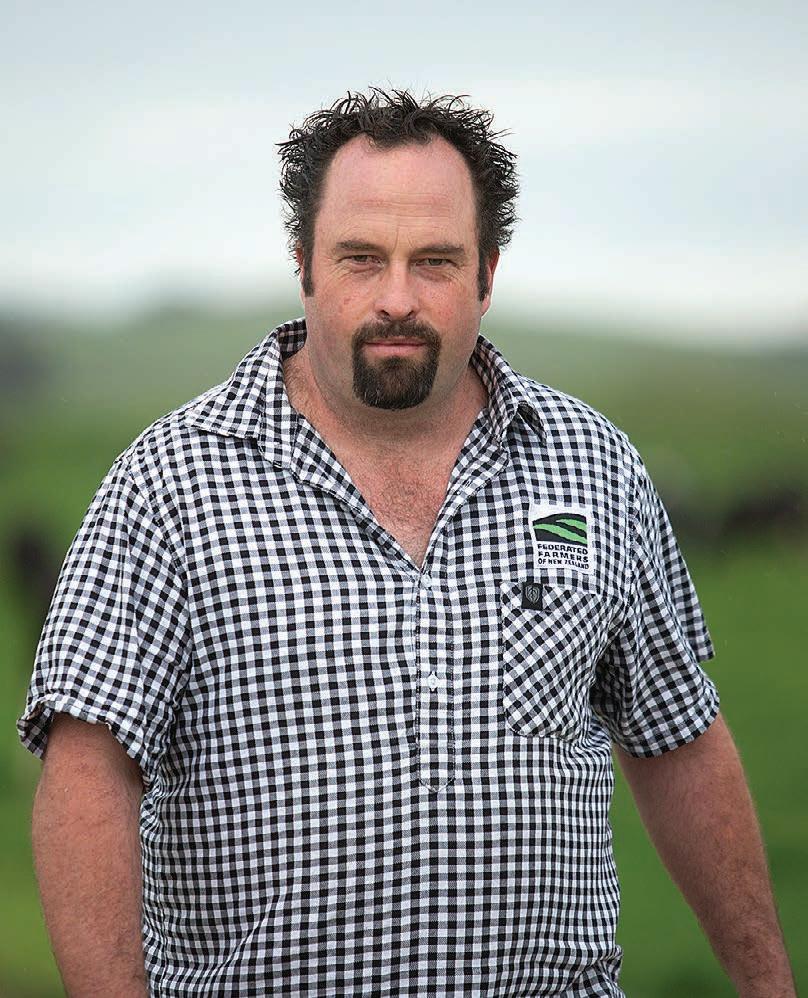
now, after more than 20 years of consistent guidance and practice and ecosystem has been allowed to flourish under the existing rules.
“After two decades of stability, we have to ask: why now? This has the hallmarks of a desperate revenue grab dressed up as a legal interpretation,” McIntyre says.
“That’s why the Minister needs to make it clear this won’t proceed.”
Federated Farmers is not alone in its concerns.
“We’re hearing from a growing coalition of not-for-profits across the country, who are just as alarmed as us about the proposed change and its implications,” McIntyre says.
“From unions to professional bodies to political parties, the feedback is unanimous: this proposal would be devastating.
“The mutuality principle has
served our country well for decades, and it should be preserved.”
Federated Farmers’ submission concludes with a stark warning: if the Commissioner proceeds with the reinterpretation, it will become a political issue – one that Ministers and MPs will need to address urgently.
“The public deserve to know where the Government stands on this. We’re calling on Minister Watts to give that clarity now,” McIntyre says.
MORE:
The full submission is available at https://fedfarm.org.nz/FFPublic/ Policy2/National/250624-IRDSubmission-NFPs and Federated Farmers will continue to engage with the Government, other affected organisations, and the wider public as the consultation process unfolds.
Our local teams have first-hand experience and knowledge to understand what you’re going through, and are here to listen to whatever ’s on your mind




ALARM: A growing coalition of not-for-profits are deeply concerned about the proposed tax change, which Richard McIntyre says would be devastating for the sector.
Pine ‘quick fix’ will burn us in the end
Planting pines for carbon credits as a greenhouse gas emissions solution is a wasteful quick fix that sets us up for bigger problems down the line, Kerry Irvine says.
“It’s short-term thinking that locks in poor land use and will come back to bite us in terms of the environment, rural community viability and the economy,” the newly elected Federated Farmers Nelson president says.
He sees no problem with genuine production forestry, with timber being a significant export commodity and a way for farmers to diversify income streams.
“The issue is carbon-driven forestry.
“A bunch of investors – a good number of them offshore – make a mint claiming carbon credits while pastoral farming is displaced.” Latest data suggests total farm conversions to forestry since 2017 exceeds 300,000 hectares, resulting in the loss of more than two million stock units.
“Markets keep telling us there’s strong long-term demand for highquality, grass-fed protein in the form of red meat. Carbon credits earn New Zealand nothing,” Irvine says. ETS forestry distortions mean there’s little incentive for carbonemitting industries to invest in cleaner technologies, he says.
“What happens to all those carbon forest trees when their sequestering peaks? Plenty of them aren’t going to get cut down.
“Are we going to see the Gisborne problem repeated, with pines and debris sliding into our waterways when big storms blow through?” The scourge of feral pests coming out of forestry is well-known to farmers but it’s the fire risk top of Irvine’s mind.
The Pigeon Valley fire in the Nelson-Tasman district in late summer 2019 was New Zealand’s largest wildfire before being overtaken by the Lake Ōhau fire a year later.

“Flames raced through 2400 hectares so fast. If it wasn’t for farmland, it would have burned right to the sea,” Irvine says.
“That was production forestry too, where trees are spaced and pruned.”
Irvine says the Nelson province
has largely been spared the carbon forestry rush of recent years, but he recognises the seriousness of the problem elsewhere.
He also backs the Save our Sheep campaign to the hilt.
“Our local land use challenge is
hops. We’ve probably lost about 2000 hectares of sheep, beef and dairy farms to the hop boom.
“At the conversion stage there’s work for contractors but once the hops are established it’s mainly only work for RSE guys from the Pacific Islands.”
It’s no surprise Irvine is a defender of the sheep and beef sector.
While his father ran a trucking and quarrying business, the family also had a farm at Tapawera.
After high school Irvine trained at Telford and went shearing to earn money while he looked to land a farm job.
That shearing stint stretched to 15 years, taking him all over New Zealand, Australia and further afield.
He says it was a lot of fun but eventually enthusiasm for shearing 300 sheep a day and living out of a suitcase ebbed.
It was a bit of a relief for he and wife Pamela to come back to the family farm to “so-called ‘settle down’”, he says.
When his father bought the property an hour south of Nelson, bordering Kahurangi National Park, it was pretty run down.
“We’ve worked away, built up the fertility, knocked out as much gorse as we can.”
At 700 hectares, roughly 400 hectares-effective, they now run


I N G C A S

about 1000 ewes, 150 breeding cattle and 200-300 fattening lambs.
With red deer and wild pigs on his doorstep for hunting, it’s a lifestyle Irvine wouldn’t trade for anything.
“I’ve always been a country boy. I go to the city and can’t wait to get home.”
Markets keep telling us there’s strong long-term demand for high-quality, grass-fed protein in the form of red meat. Carbon credits earn New Zealand nothing.
Kerry Irvine Federated Farmers Nelson president
His dad was a Feds man and Irvine saw the value and satisfaction of “standing up for other farmers”.
He filled in when former Nelson meat and wool chair Brent Hodgkinson went on holiday to Australia, including attending a Meat and Wool Council meeting in Wellington.
He enjoyed the experience and when Brent returned, Irvine stayed in the role – for eight years.
He succeeds Murchison dairy farmer Stephen Todd as president. Irvine says Federated Farmers’ advocacy to central and local government has proven to be extremely effective in knocking down the worst of impractical red tape.
“It’s a helluva challenge to run a farm in this modern world but working together under the federation’s banner, we can make a difference.
“The people in Federated Farmers are awesome. I could go anywhere in New Zealand and catch up with friends I’ve made at Meat and Wool and Dairy Councils.
“In the end, it’s the good people who really make Federated Farmers tick.”

RISK: The scourge of feral pests coming out of forestry is well-known to farmers but it’s the fire risk top of Kerry Irvine’s mind.
STRONGER TOGETHER: Kerry Irvine says he learned from his dad the value and satisfaction of standing up for fellow farmers.
Dannevirke 581 Maunga Road

Ben
Nevis
- 167 ha*STS
Located just 15 km east of Dannevirke, Ben Nevis offers a superb balance of contour and functionality across 167 ha*STS.
With approximately 20 ha of flats and the remainder in easy to medium hill country, the farm presents a practical platform for a range of finishing or breeding operations. The property is well equipped with extensive infrastructure including reticulated water to troughs, a six-stand woolshed, and sound deer fencing. A spacious four-bedroom, twobathroom home provides comfortable living with an option to purchase a further three-bedroom cottage as well, making this an ideal all-round family farming unit. Whether you're looking to scale up or secure a foothold in a proven farming district, Ben Nevis is a property well worth your consideration. *Subject to Survey.

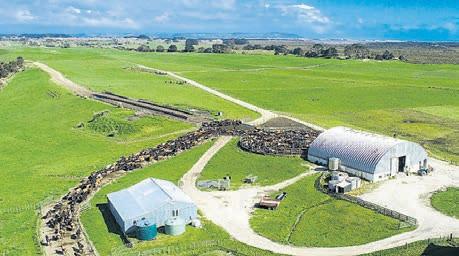

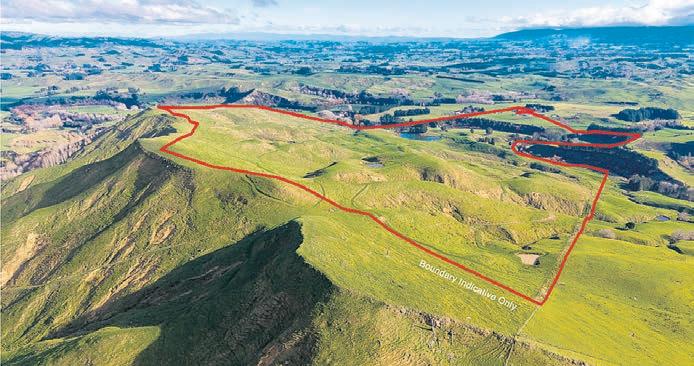

Fri
View By appointment
Web pb.co.nz/PR207468


Jared Brock M 027 449 5496 E jared@pb.co.nz
Sam McNair M 027 264 0002 E sam.mcnair@pb.co.nz

Tender closes 2.00pm,
25th Jul, 2025, Property Brokers, 4 Stanley Street Dannevirke.


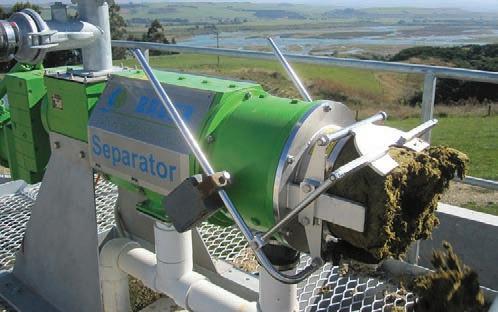







Notice of Election 2025 Board of Directors

Ravensdown is governed by a board of 9 directors, 6 of whom are shareholder-elected, representing the North and South Islands. One shareholder-elected director from each Island is required to retire by rotation each year
Jacqueline Rowarth (North Island) and Nicola Hyslop (South Island) are the incumbent directors retiring by rotation this year and nominations are now called for candidates to stand for these director positions. Both retiring directors have confirmed their intention to stand for re-election Nominations must be made on the official form, which can be obtained from the Returning Officer Each nomination form must be signed by the candidate and two nominators who must be transacting shareholders of Ravensdown and who are eligible to vote for the relevant Island area election Nominations must be received by the Returning Officer by 5pm on Monday 28 July 2025
For further information or nomination documents please contact the election helpline 0800 666 038 or email iro@electionz.com
Anthony Morton Returning Officer - Ravensdown Limited PO Box 3138, Christchurch 8140
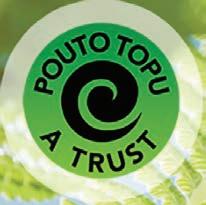
2IC – Dairy Operations
About the Opportunity Pouto Tōpū A Trust is seeking a motivated and experienced Second-in-Charge (2IC) to join our progressive dairy operation on the stunning Pouto Peninsula. This is a unique opportunity to work on a large-scale, farming enterprise with a strong focus on sustainability, innovation, and community.
You’ll be supporting the Farm Manager across the Opuna dairy unit (640 cows) — with an adjoining support block. The farm is bordered by the Kaipara Harbour and boasts access to private beaches and extensive recreational areas.
Key responsibilities:
• Assist with day-to-day operations including milking, animal health, and pasture management
• Lead and supervise staff in the absence of the Farm Manager
• Maintain high standards of animal welfare and environmental compliance
• Operate and maintain farm machinery and infrastructure
What we’re looking for:
• Proven dairy farming experience, ideally in a leadership or 2IC role
• Strong communication and teamwork skills
• Competence in pasture and stock management
• Tech-savvy with a proactive attitude toward farm systems and record-keeping
• A genuine passion for dairying and rural life
What we offer:
• Competitive remuneration package
• Quality on-farm housing and infrastructure
• Supportive and forward-thinking farm governance
• A lifestyle location with access to beaches, forests, and a local school (to Year 8)
How to apply:
Att: We are not helping with visa applications and NZ residents only need apply. Send your CV and contact details for two recent farming-related referees to: cpmitchelson@gmail.com henryholyoake@gmail.com

FARM MANAGER
Kowhai, Kimbolton
We are currently seeking a Farm Manager for our Kowhai property, a stunning 440ha farm with three levels of terrace flats. Kowhai runs approx. 1750 breeding ewes and up to 500 2-year Angus steers. Kowhai is part of a 1294ha business which includes one hill-country farm block and two down-country blocks.
The successful applicant will be responsible for the day-to-day running and up-keep of the property as well as working with the owner in planning and development. They will also be required to assist on other properties within the group when required.
This role will suit a self-starter with a strong work ethic and good communication skills who is comfortable working independently as well as part of a team. The position would ideally suit someone looking for their first management position or someone with previous management experience. The ideal candidate will have tractor skills.
Kowhai is located 30 minutes from Feilding and 50 minutes from Palmerston North.
A 4-bedroom house is available.
For an informal discussion about the position phone Hamish Brown after 7pm on 027 22 66 276 or email: medwayhills@gmail.com



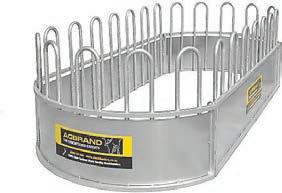



























HORTICULTURE
richest source of natural iodine. Dried and milled for use in agriculture and horticulture. Growth promotant / stock health food. As seen on Country Calendar. Orders to: 03 322 6115 or info@nzkelp.co.nz
LIVESTOCK FOR SALE
RED DEVON BULLS. Quality. Well grown. Waimouri Stud Feilding. Phone 027 224 3838.
PUMPS
HIGH PRESSURE WATER PUMPS, suitable on high headlifts. Low energy usage for single/3-phase motors, waterwheel and turbine drives. Low maintenance costs and easy to service. Enquiries phone 04 526 4415, email sales@hydra-cell.co.nz
RAMS FOR SALE
WILTSHIRES-ARVIDSON. Self shearing sheep. No1 for Facial Eczema. David 027 2771 556.
STOCK FEED
HAYLAGE $85, baleage $95, lucerne baleage $115. Unit loads available. Manawatu area. Phone 021 455 787.
TRACTORS AND MACHINERY
FASTFENCER JNR FOR SALE 1300mm or 2100mm high. Carry upto 500m. 1 or 2 roll options. Built tough to save time and labour. Call 022 636 1191 get fencing faster. www.quikfence.co.nz
TREES FOR FARMS
ADDITIONAL INCOME. Stock shelter, erosion control, Truffle income, animal fodder, fireproof cork and Natives. 021garden.co.nz Litherland Truffles 021 327 637.
If you’ve got a joke you want to share with the farming community … then email us at: saletalk@agrihq.co.nz with Sale Talk in the subject line and we’ll print it and credit it to you. Conditions apply

A/c
STOCK REQUIRED

•




WAKARUA WAGYU
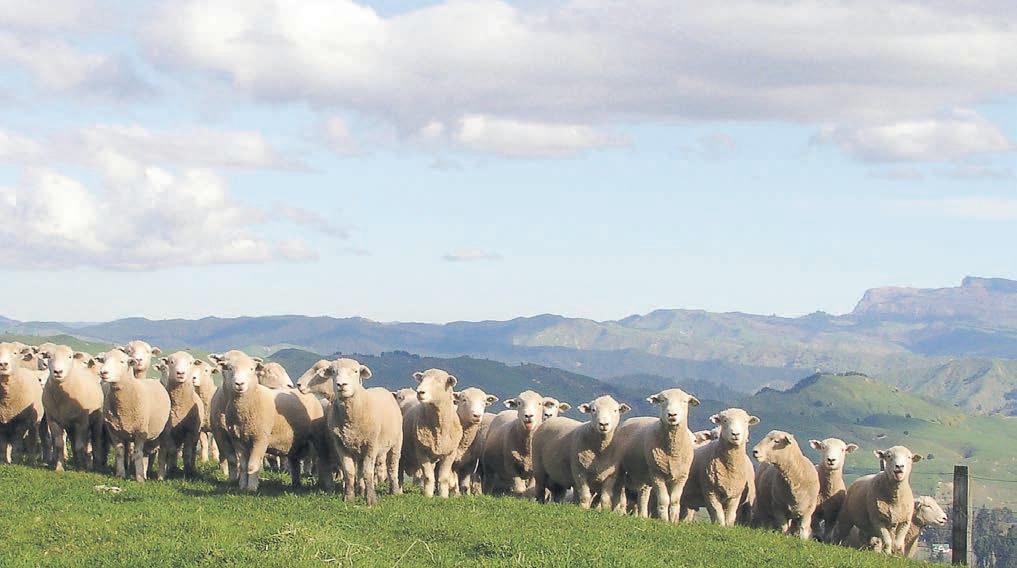
Breeding

•
•
•
•
•
•
•




AUTUMN 2025 BULL SALE RESULTS REVIEW

To submit your sale results or to subscribe to our complimentary Bull Sales eNewsletter contact Andrea or visit farmersweekly.co.nz/bull-sales
Deadline July 7
Andrea Mansfield 027 602 4925 • livestock@agrihq.co.nz
Bulls still nudging records aside
A Gisborne Angus sells for a massive $161,000, knocking out a record set just days before.

Gerhard Uys MARKETS Livestock
SALE price records were flying out the window last week, with the highest price for an Angus bull being beaten twice.
Tangihau Angus, Gisborne, beat their own record from last year of $135,000 with top bull Lot 16 Tangihau U418 selling for the huge sum of $161,000 to Oregon Angus, Masterton.
Tangihau sold 50 from 50, averaging $24,880.
Before Tangihau Angus’s top price Cricklewood Angus stud, at Wairoa, Hawke’s Bay, had sold Nuhaka Lot 2, Cricklewood U909 for $156,000 to Puke-Nui Angus in Taumarunui.
The $156,000 held the place
for top priced Angus bull for a day before the sale of Tangihau’s U418 managed to top it.
Cricklewood sold 14 from 14, averaging $24,357.
Both stud master Dean McHardy from Tangihau Angus, and stud master Michael McMillan from Cricklewood said the sales meant their breed programmes were headed in the right direction, and that their bulls tick the right boxes for their clients.
Records were already flying the week before when Matariki Herefords, Clarence Valley, made a breed record price of $80,000 for Matariki Qualifier Q361.
They had an extraordinary average price of $14,921 for the full clearance of 63 bulls bred by the Murray family.
The record price was paid by the Humphreys of Wilencote

Polled Herefords and the Reeves family of Mokairau Herefords near Gisborne.
Matariki also made $40,000 for Lot 52, Quick Shot Q124, paid by Maungahina Herefords, Masterton.
For the first time Te Mania Angus, Parnassus, offered their bulls only to commercial farmers with no stud transfers.
They sold 109/116, averaged $11,600 with a top offer of $30,000 for Lot 16 23465.
Proudly sponsored by
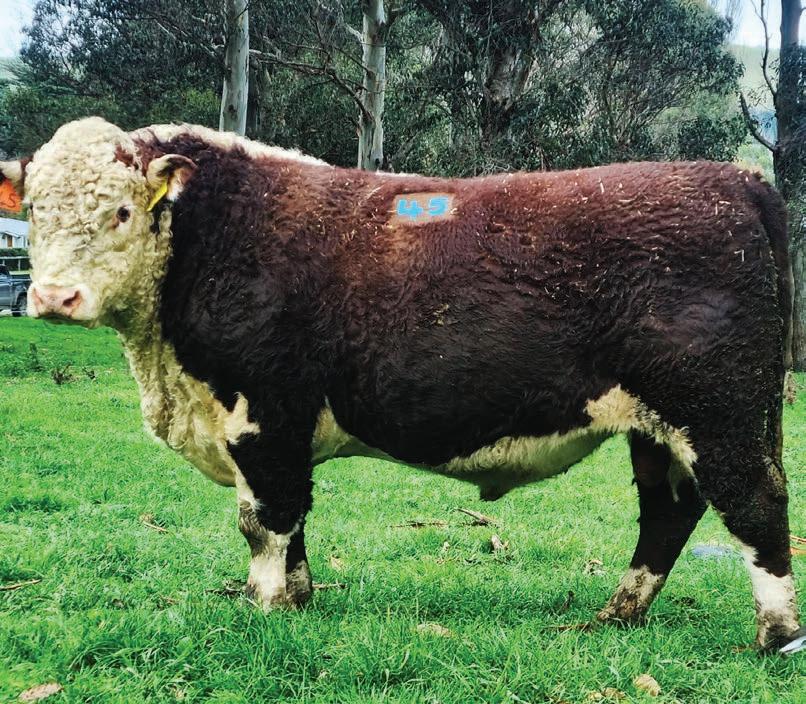
price was Lot 3 at $22,000 to Whangara Station.
Burtergill South Devons, West Melton, offered 15 R2 bulls with 15 sold, averaging $7574 and a highest price of $17,000 to stud.
of 38 R2 bulls, averaging $14,684, with highest of $31,000 for Lot 5 to Cricklewood Angus, also Lot 6 for $21,000 to Glengyle Angus.
Kaharau Angus sold 66 from 66, averaging $17,113 and a top price of $38,000.
Stern Angus, Geraldine, sold Rob Roy of Stern Lot 37 to Cricklewood Angus stud for $75,000.
They sold 93 from 100, averaging $12,500.
James Fraser from Stern said he was delighted with the price and that Rob Roy of Stern has exceptional EBVs.
Turihaua Angus, Gisborne, upped their top price from last year by $14,000. After selling Lot 2 Turihaua U130 for $92,000 to Cricklewood Angus, they averaged $19,569.
They sold 72 from 72.
Kenhardt Angus, Nuhaka, had a full clearance, selling 51 and averaging $12,627. Their highest
For the first time Te Mania Angus, Parnassus, offered their bulls only to commercial farmers with no stud transfers. Get ahead of
Whangara Angus sold 39/39, averaging $10,666 with a top price of $21,000 for U79 to Haldon Station.
Ratanui Angus, Wairoa, sold 38
Orere Angus, Gisborne, cleared 17 from 17, with an average of $14,667 and the highest price fetched for Lot1 Orere U04 at $40,000 to Ratanui Angus.

Make informed livestock trading decisions with AgriHQ. Track key saleyard, paddock and slaughter prices, market indicators, and forecast prices through a suite of reports. Customise your selection and access everything in one convenient platform: myAgriHQ.



BREED RECORD: Matariki Herefords, Clarence Valley, made a breed record price of $80,000 for Matariki Qualifier Q361.
ROB ROY: Stern Angus, Geraldine, sold Rob Roy of Stern Lot 37 to Cricklewood Angus stud for $75,000.
TOP BULL: Tangihau Angus, Gisborne, set a new Angus bull price record with Lot 16 Tangihau U418 selling for a massive $161,000 to Oregon Angus, Masterton.
Photo: Rebecca Williams
Cattle Sheep Deer

Weekly saleyard results
These weekly saleyard results are collated by the AgriHQ LivestockEye team. Cattle weights and prices are averages and sheep prices are ranges. For more detailed results and analysis subscribe to your selection of LivestockEye reports. Scan the QR code or visit www.agrihq.co.nz/livestock-reports
Frankton | June 18 | 473
R3
Aut-born weaner dairy-beef bulls, 105kg
Aut-born weaner dairy-beef heifers, 85kg
Boner crossbred cows, 440kg
Frankton | June 24 | 413
R2 dairy-beef heifers, 400kg
R1 dairy-beef steers, 210kg
R1 dairy-beef heifers, 175kg
Frankton | June 25 | 352 cattle
R2 dairy-beef heifers, 385kg
Aut-born yearling

CLOSING IN ON $9/KG: These autumn-born weaner Hereford-Friesian steers from Matakana Island, Bay of Plenty, sold at the Rangiuru sale on Tuesday, June 24 for $890-$900, which was just under $9/kg.



Stortford Lodge | June 18 | 305 cattle, 7444 sheep $/kg or $/hd
Mixed-age traditional cows, VIC & empty, 515kg 3.53
R2 Friesian bulls, 475kg 4.34
R1 traditional steers, 205kg 1205
R1 traditional heifers, 235kg 1025
Mixed-age Romney ewes, SIL, all 153-220
4-tooth-5-year Romney ewes, SIL, CS, all 255-267
2-tooth Romney ewes, SIL, CS, all 232-274
Store cryptorchid lambs, all 144-214
Store male lambs, all 150-177.50
Store wether lambs, all 130-165.50
Store ewes, all 133-206.50
Store mixed-sex lambs, all 115-141
Stortford Lodge | June 23 | 1135 sheep $/kg or $/hd
Prime ewes, most 111-180 Prime lambs, most 220-241
Stortford Lodge | June 25 | 539 cattle, 3310 sheep
Feilding | June 19 | 258 cattle, 3410 sheep
ideas that grow is a Rural Leaders podcast in association with



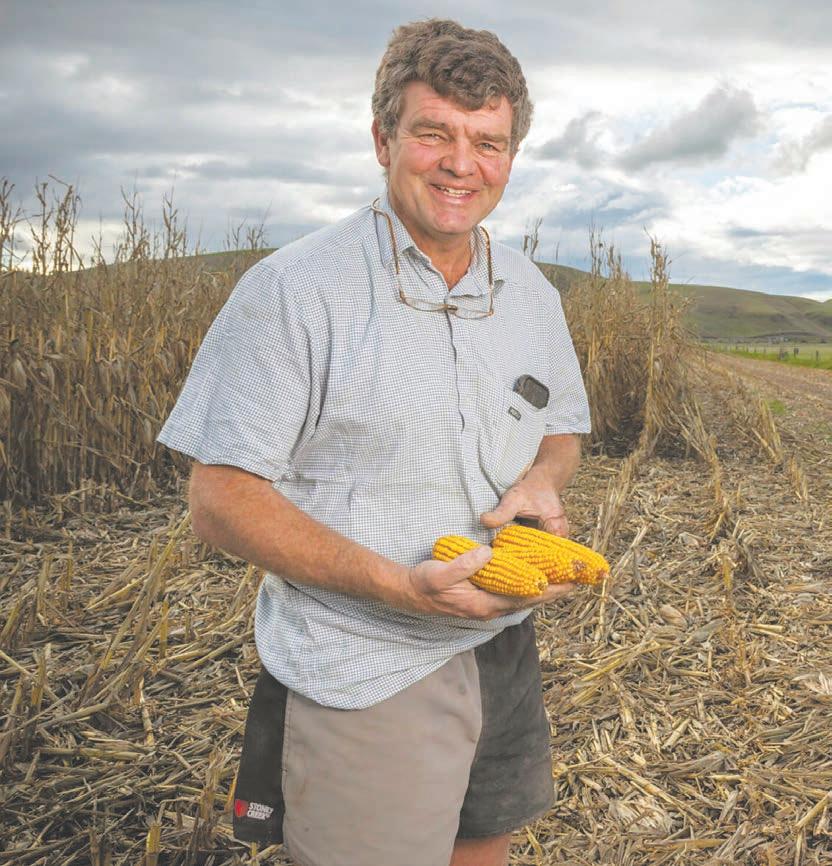
A weather data dive at the halfway mark

Philip Duncan NEWS Weather
JULY marks the start of the second half of 2025 and, usually, peak winter weather – although as I’ve written in previous weeks the actual peak of winter’s cold shifts around in NZ each year based on where high pressure is parked.
Now that half of this year is, incredibly, already done and dusted it’s time to see the second half in with some stats by reviewing the state of the nation’s recent weather.
SOIL MOISTURE
Most regions are basically bang on where they should be for this time of year. Soil moisture levels are, generally speaking, about average with a +/- 10mm difference compared to normal.
Driest is Hawke’s Bay, in particular an area from Napier to Hastings and surrounds. This one area is currently 50mm below normal rainfall – and is the only part of NZ on the soil moisture map showing red shading. This dry zone also extends westwards through parts of Central
Hawke’s Bay and then over into Manawatū, where there is a 10-30mm deficit (not much but noticeable).
Wettest is Canterbury to Marlborough along the South Island’s east, which is 20-40mm wetter than usual right now.
In fact I wouldn’t be surprised if some were much wetter than that locally, with NIWA’s monitoring stations not located under some of Canterbury’s most intense rainfall in recent months.
SUNSHINE HOURS
It has been a brighter than usual start to winter, at least so far, for many regions across New Zealand. Those in the highest category (125%+ of sunshine hours compared to normal) include Auckland, Coromandel Peninsula, Bay of Plenty, East Cape, Gisborne, Central Plateau, Manawatū, Whanganui, the northern half of the West Coast, large parts of Southland (mostly western) and, most incredibly, Fiordland – one of the wettest places on earth.
But it’s been much gloomier than usual in these regions: Canterbury (no surprises!), coastal Otago, and around Wellington/southern Wairarapa. These areas have had less
than 85% of the usual sunshine hours you’d be getting at the start of winter.
TEMPERATURES
In recent weeks the top of NZ has been warmer than average, southern/ eastern NZ colder than usual.
In the warmer camp (by over 1.2degC) is the Far North, Auckland, East Cape, Gisborne (but two southern locations, South Westland and Fiordland, also stand out as milder).
At the other extreme Southland, Otago, the Mackenzie basin, North Canterbury, inland Marlborough, Kāpiti Coast, eastern coastal Manawatū and National Park are all slightly cooler at 0.5degC to 1.2degC below normal.
Mackenzie is most extreme with temperatures averaging over 2degC below normal. Most other places are closer to average.
START OF JULY
As we kick off July, we do expect some low pressure in the Tasman Sea to cross northern New Zealand with some wind and rain, followed by another cold southerly, but we see even more high pressure and westerly driven weather also in the mix.






MIXED: This sunshine map shows it was brighter around the North Island over June, but gloomier in the east of the South Island.
Image: NIWA
